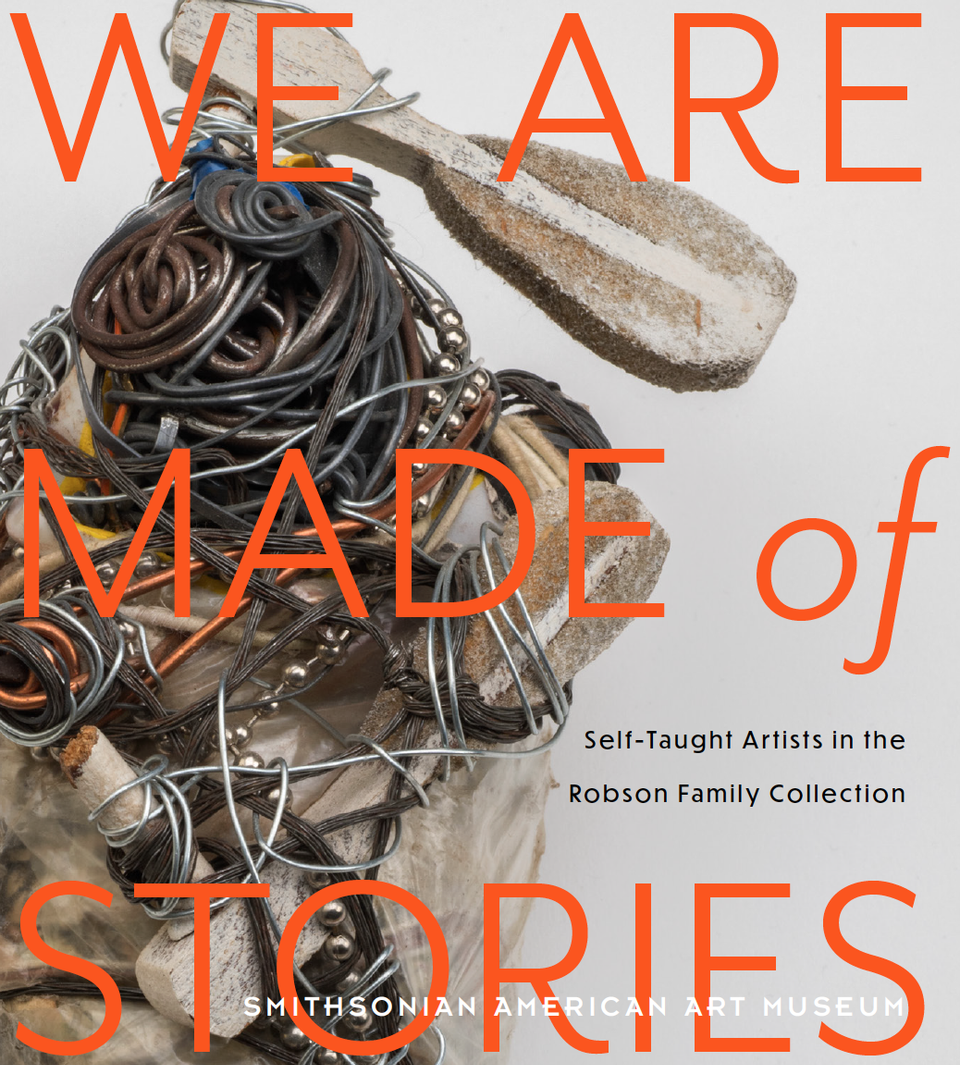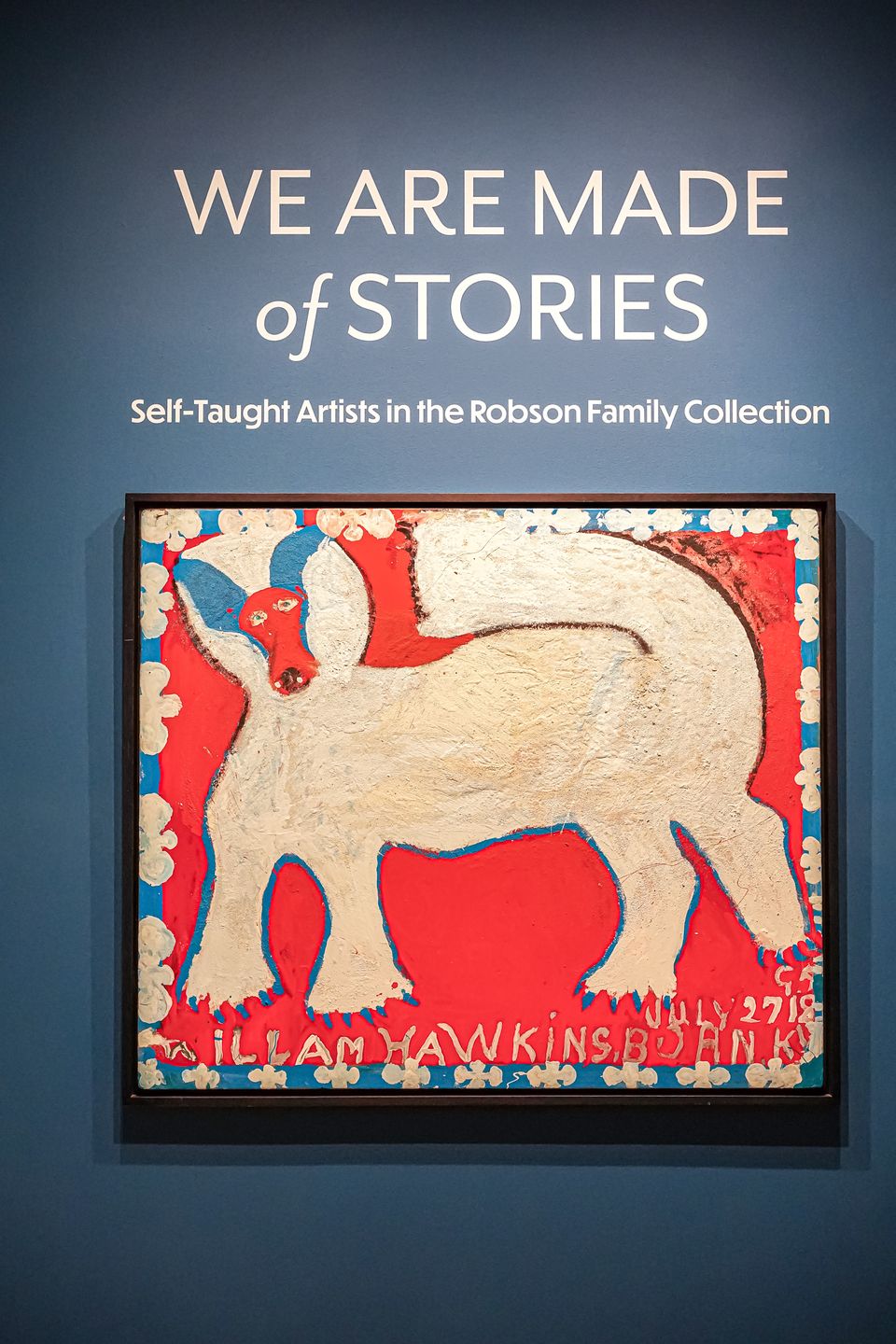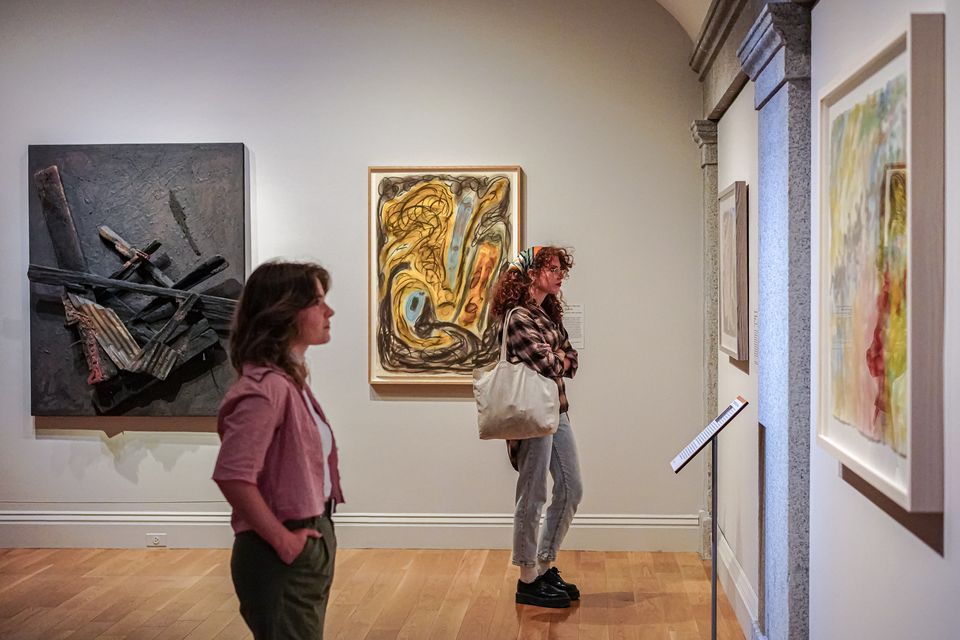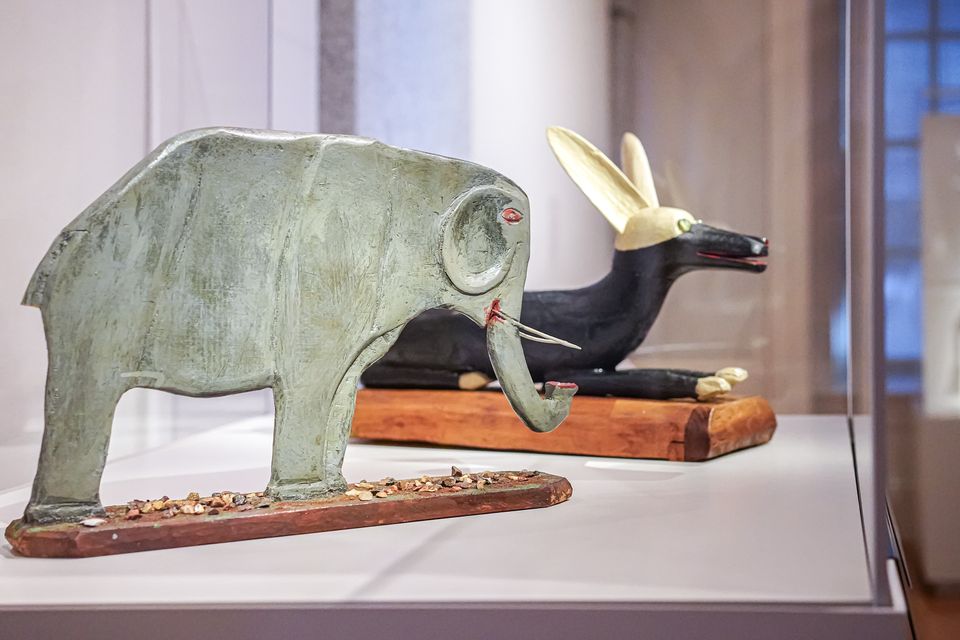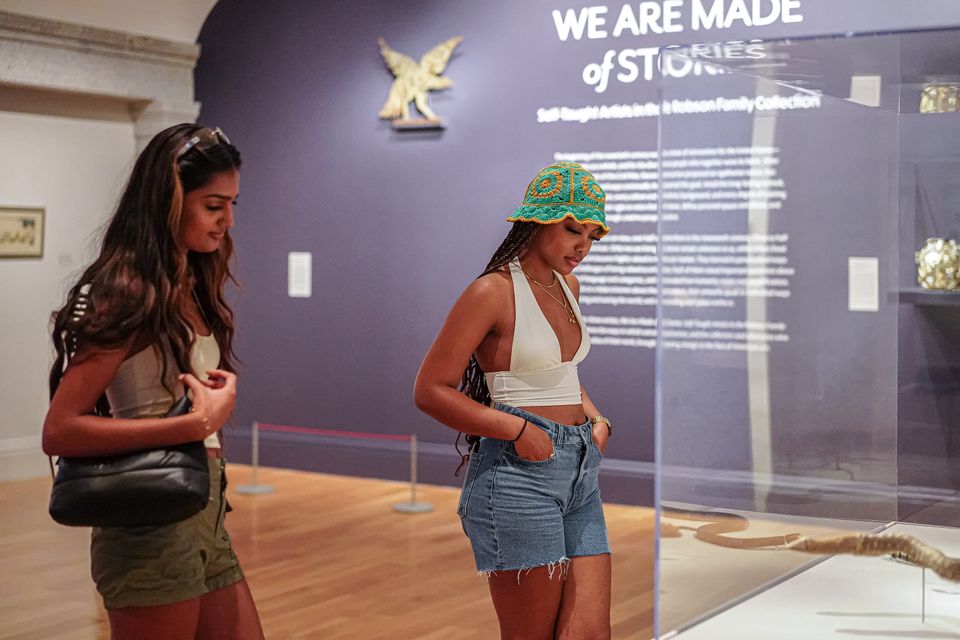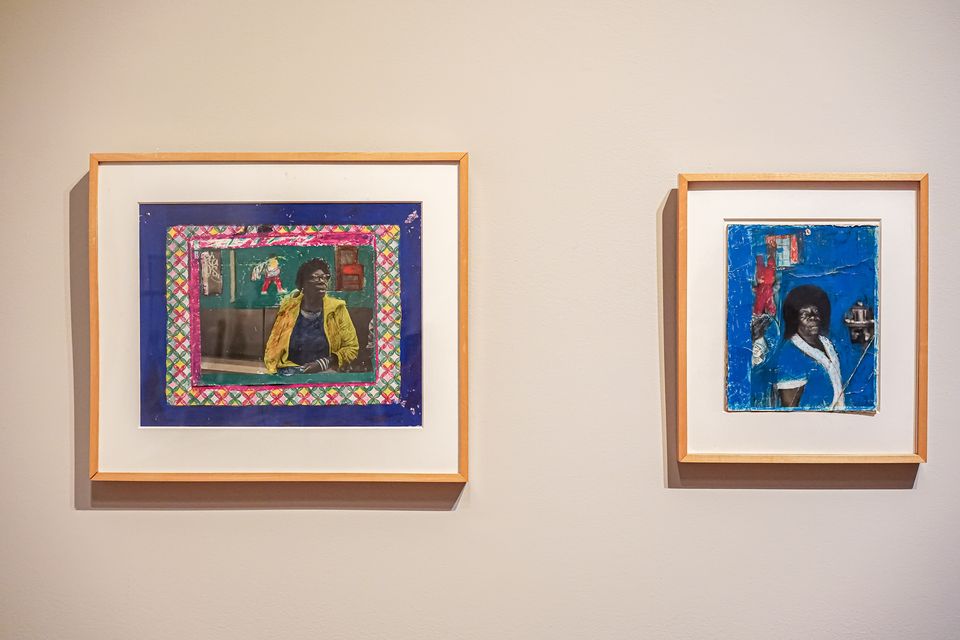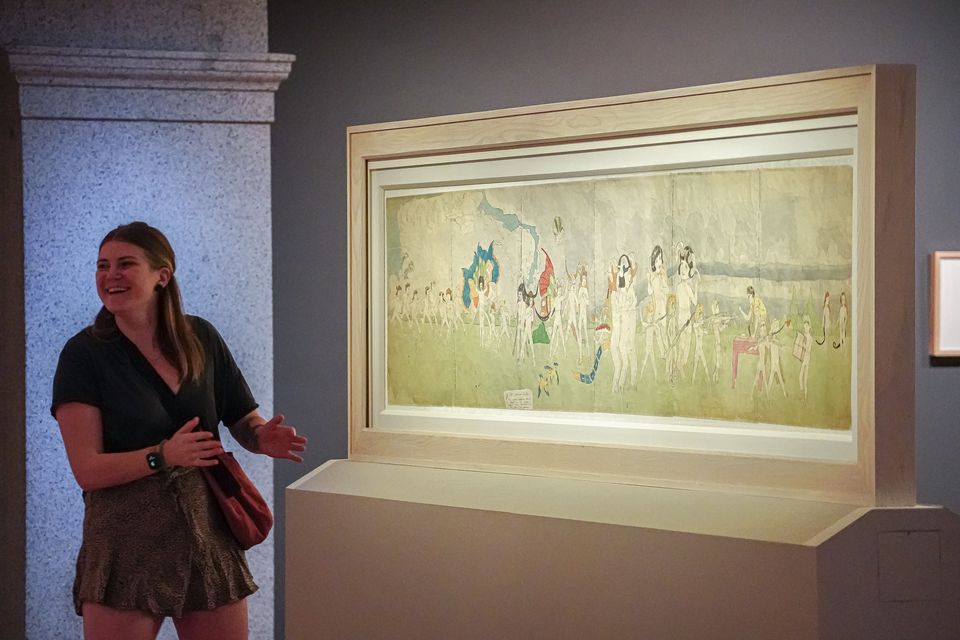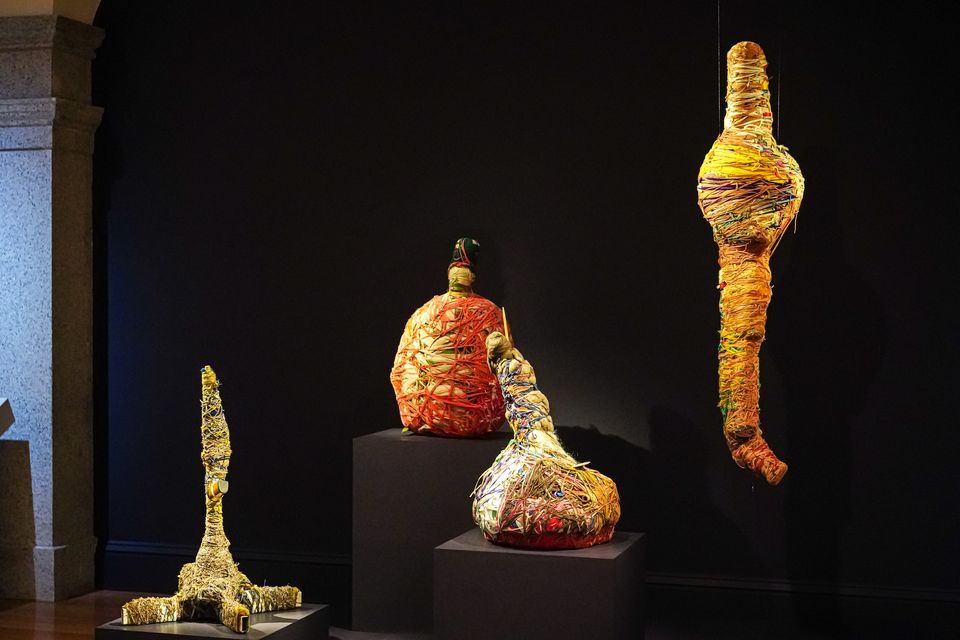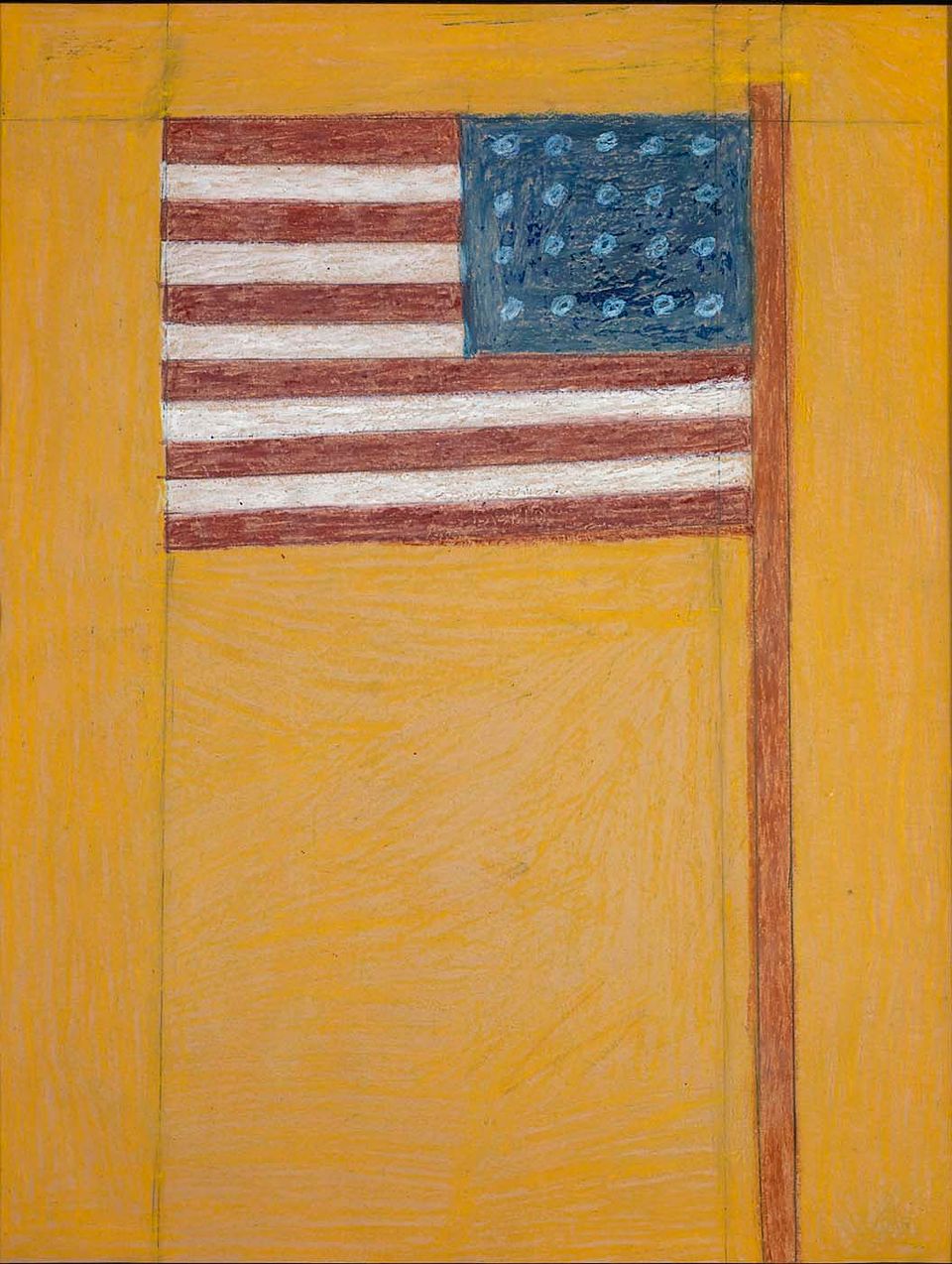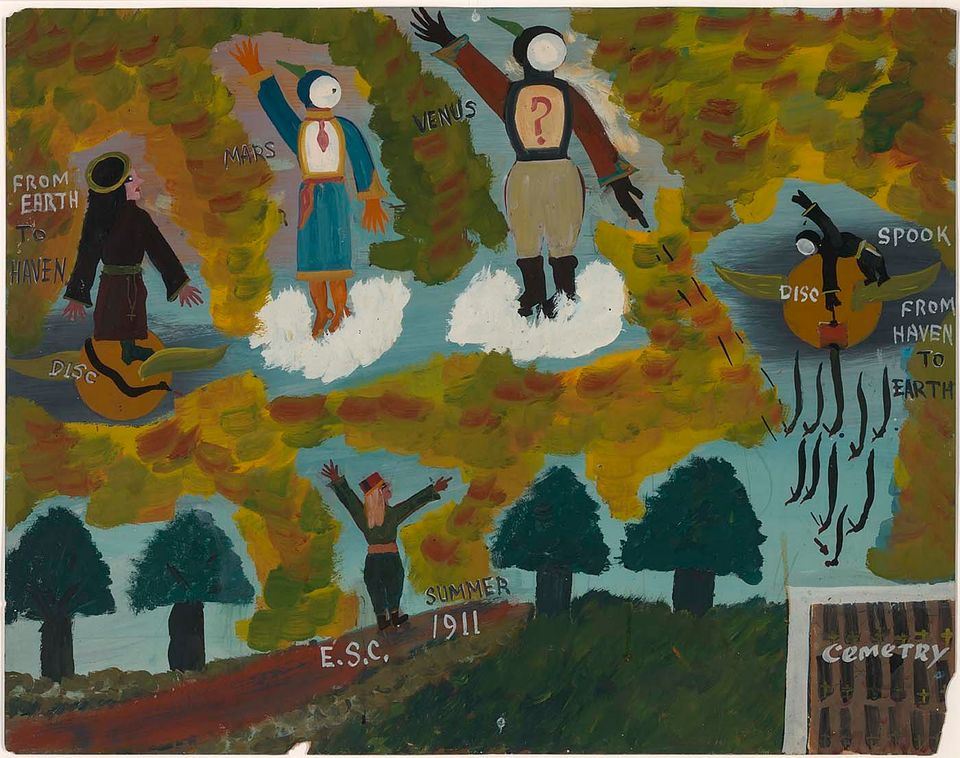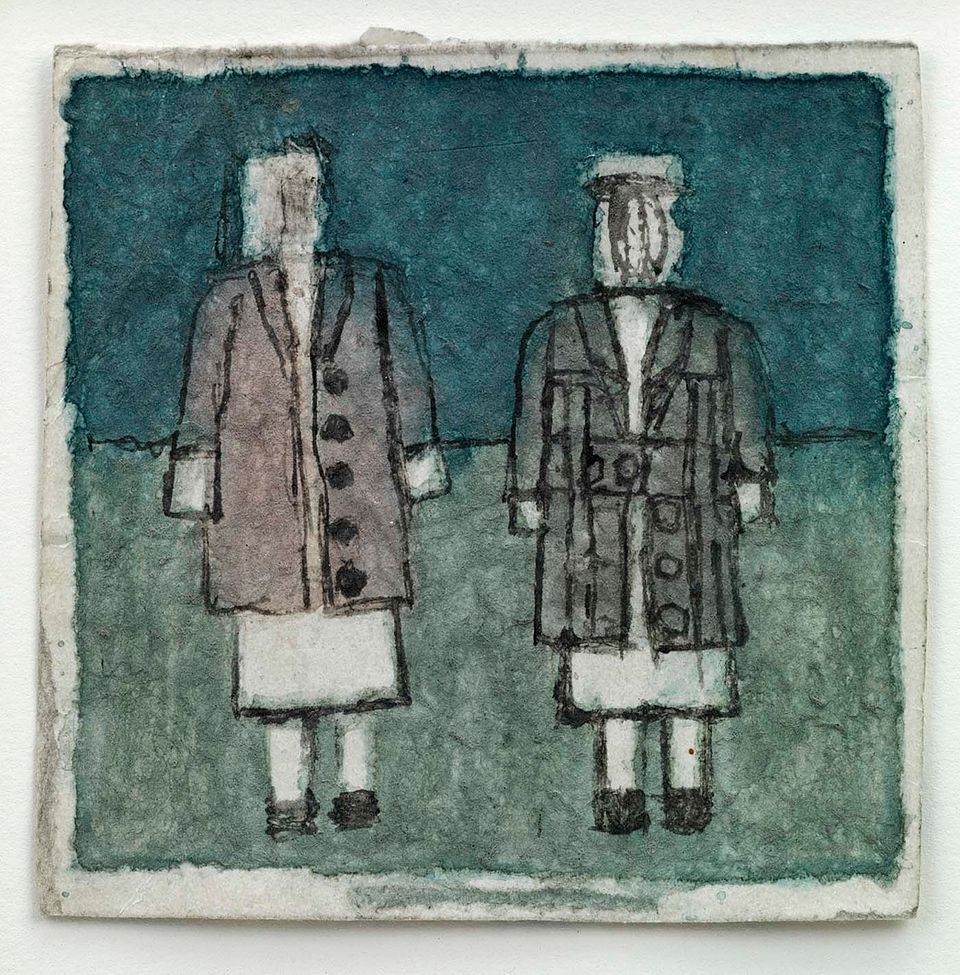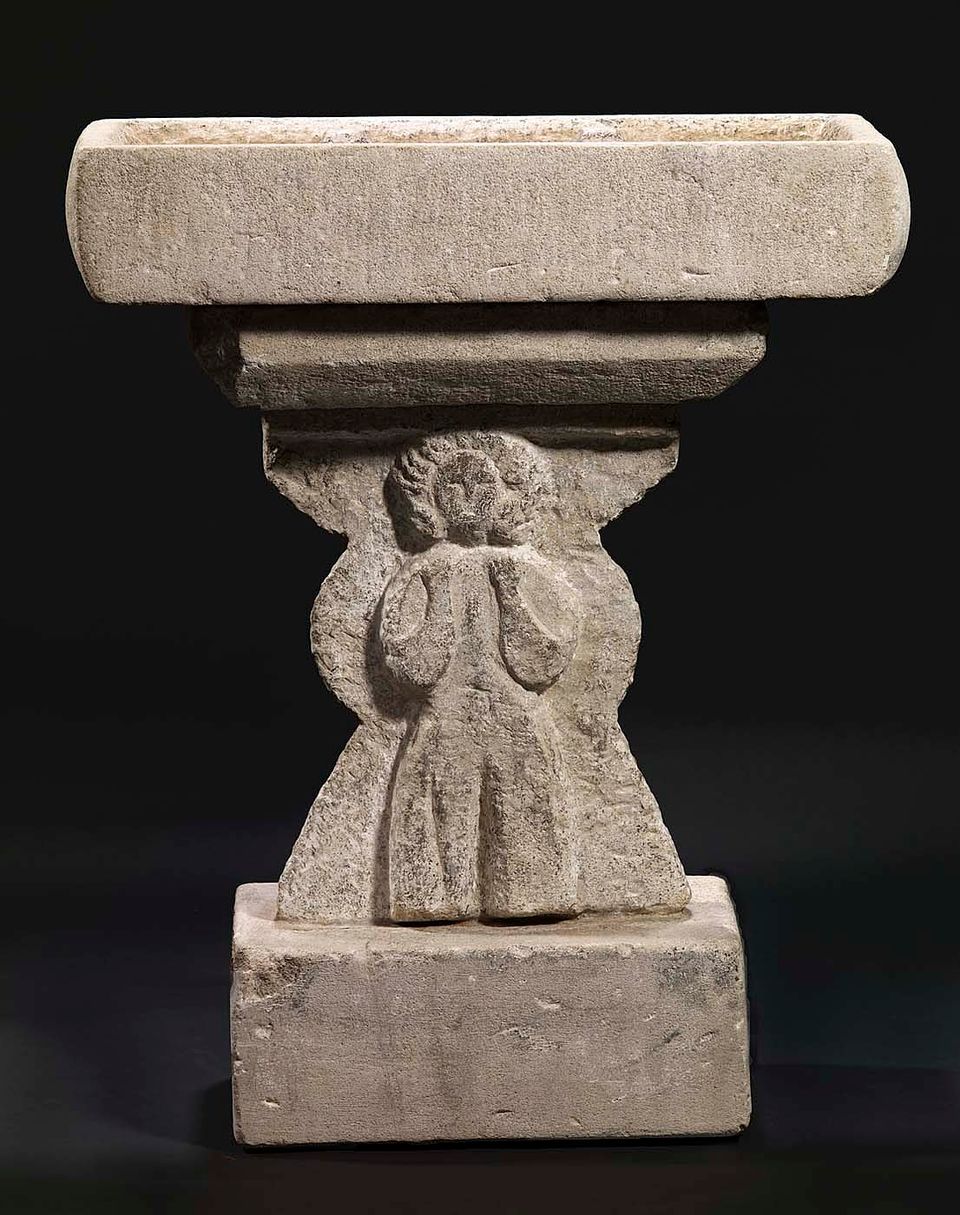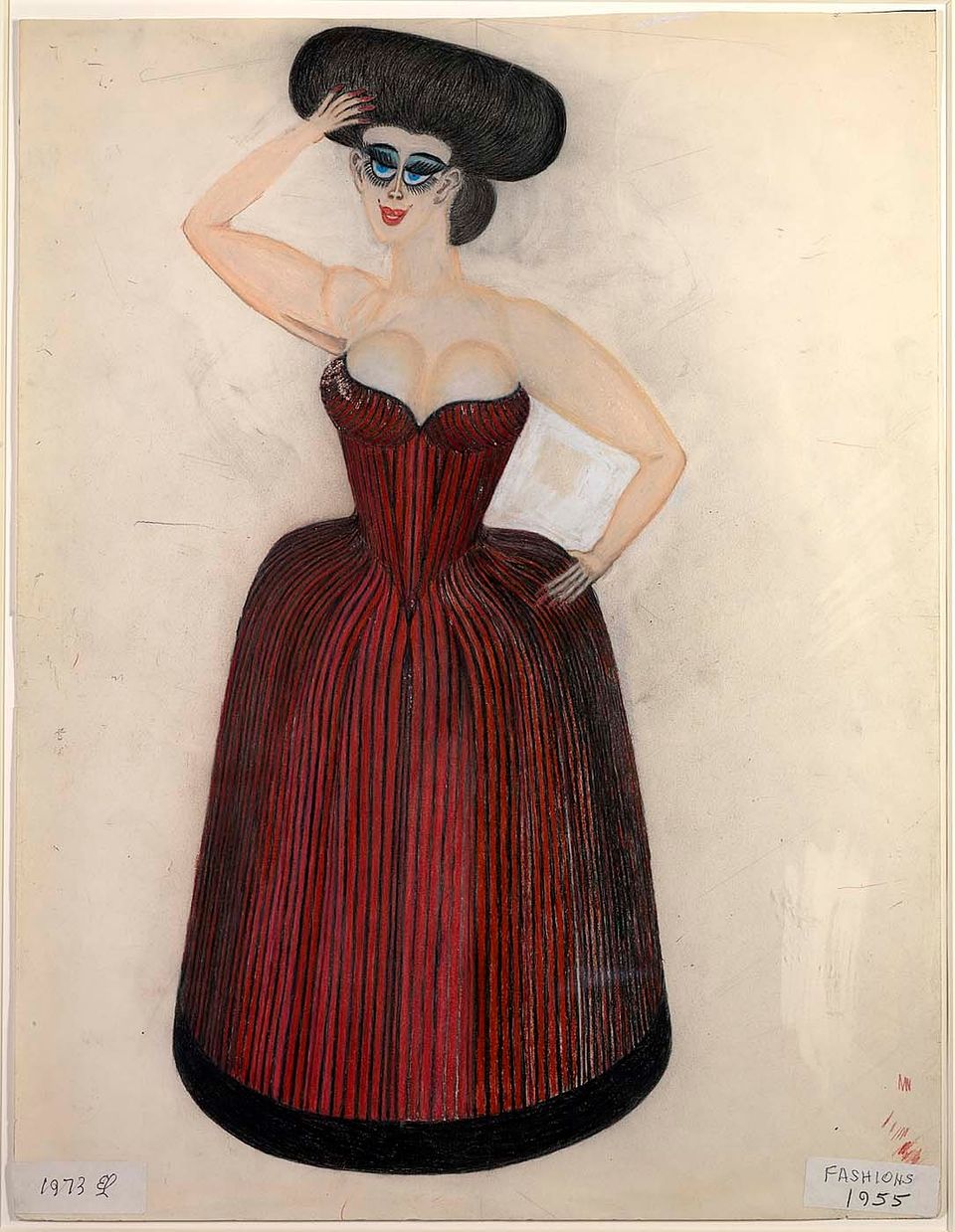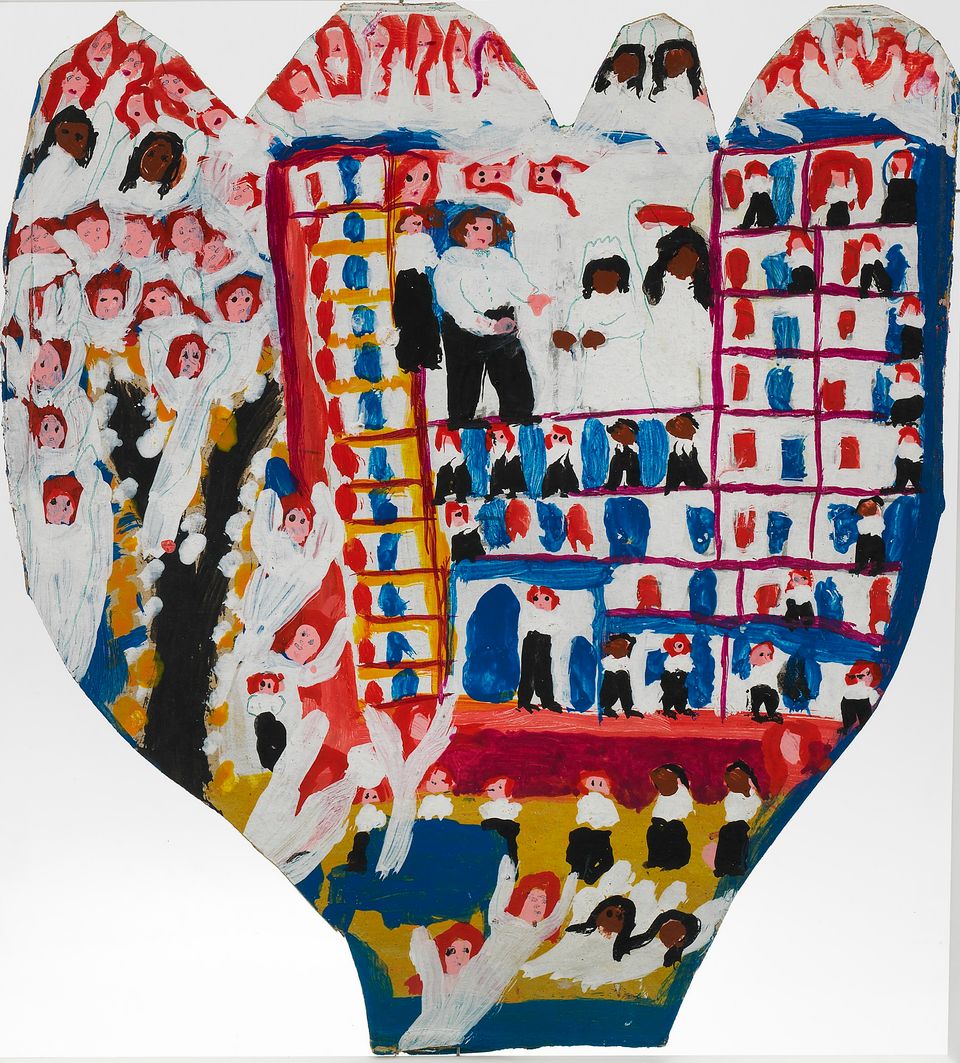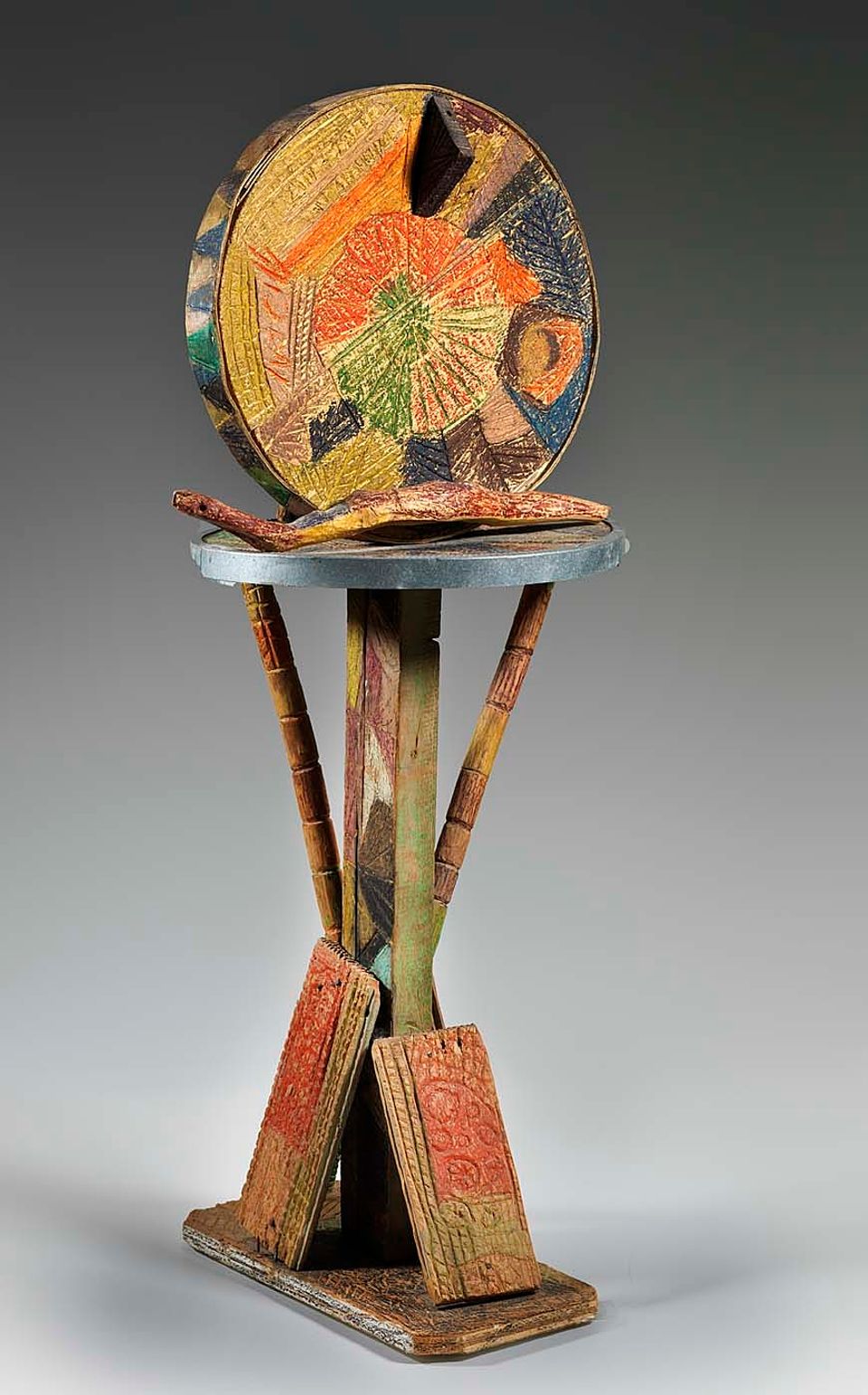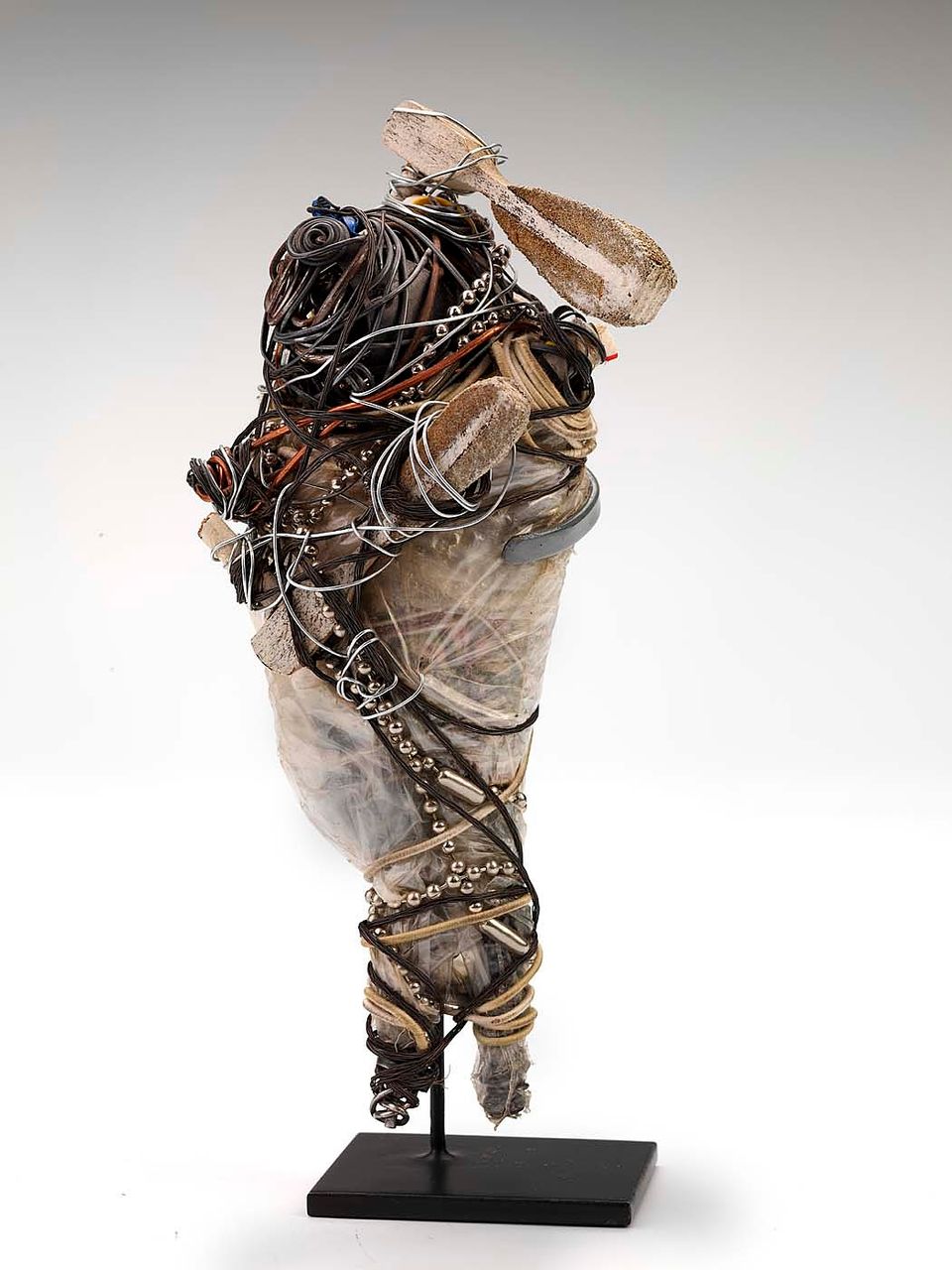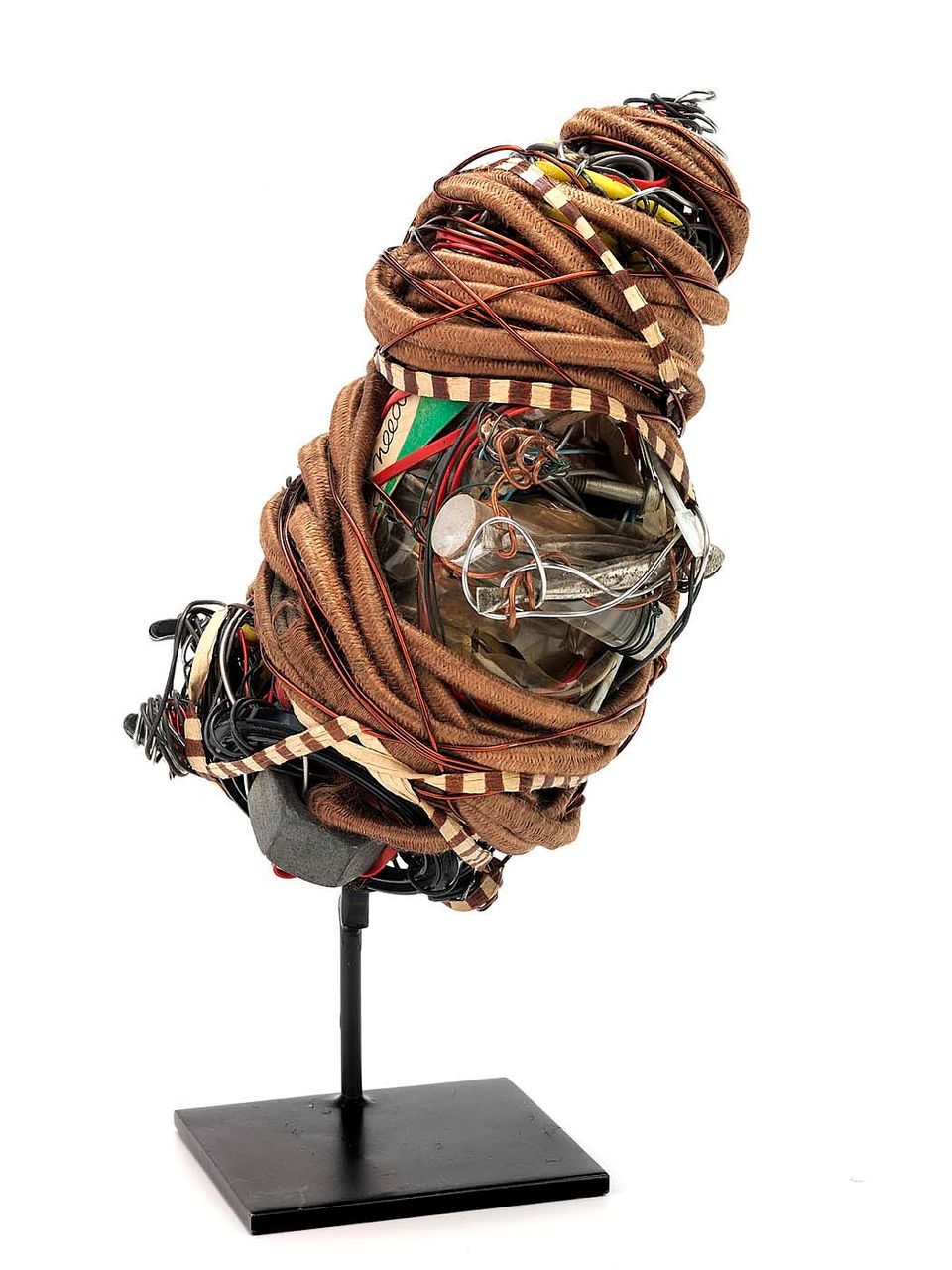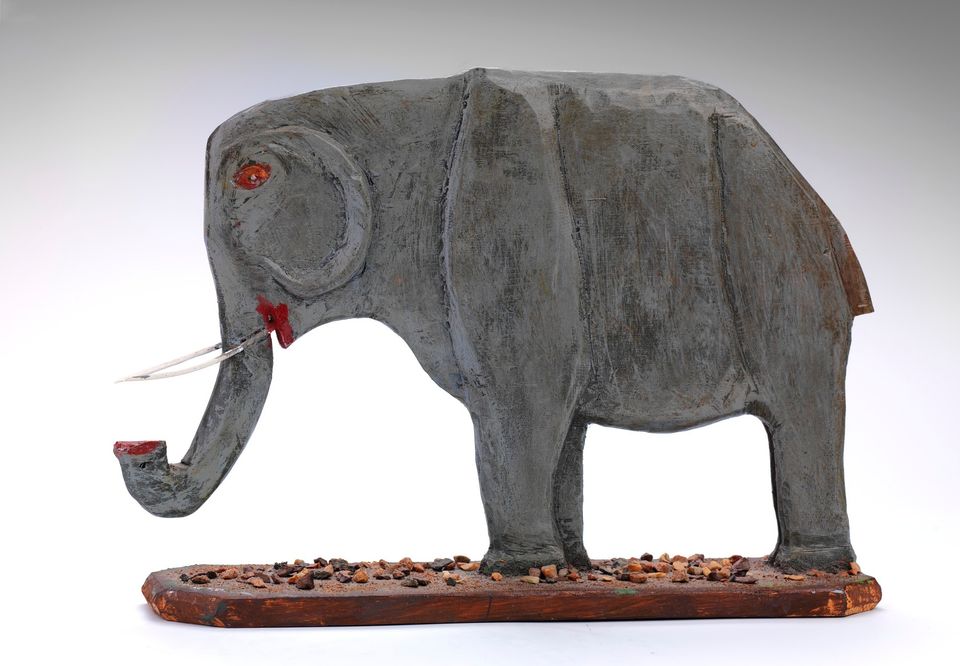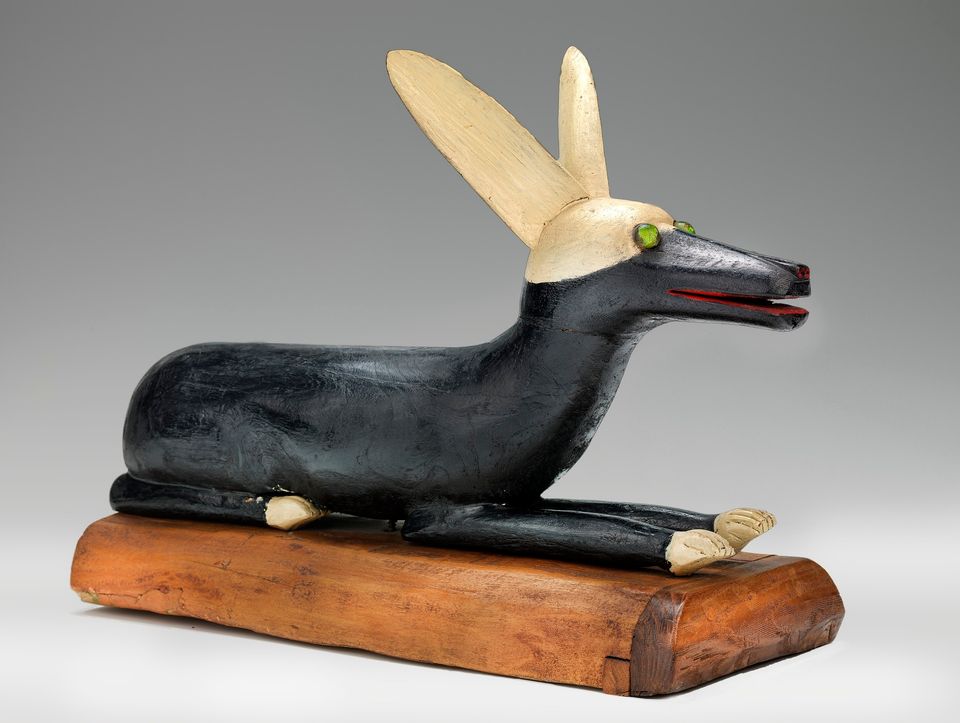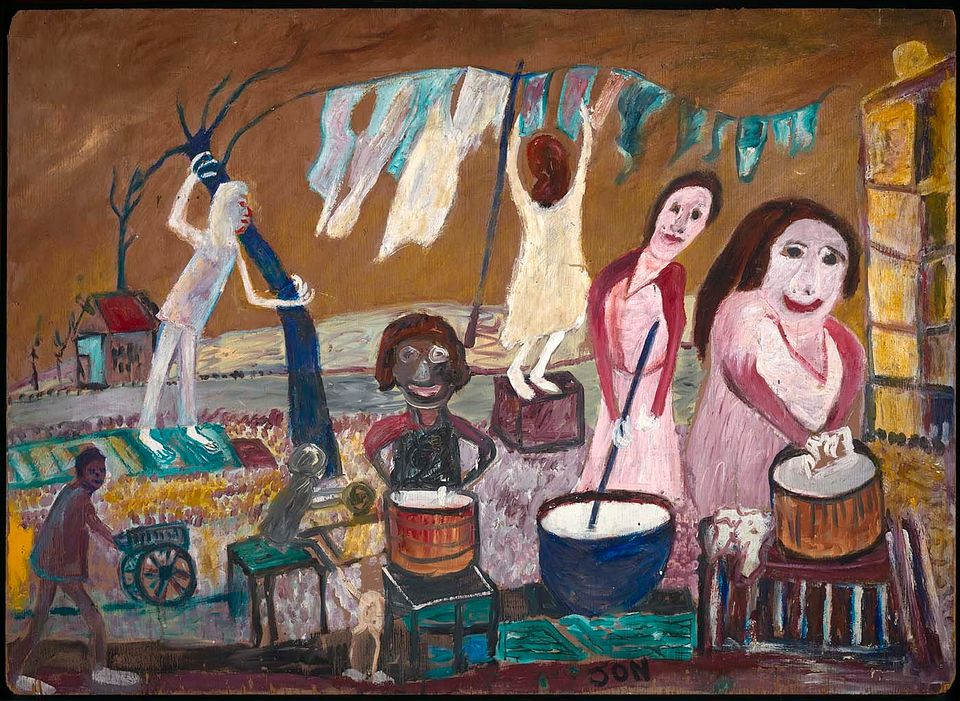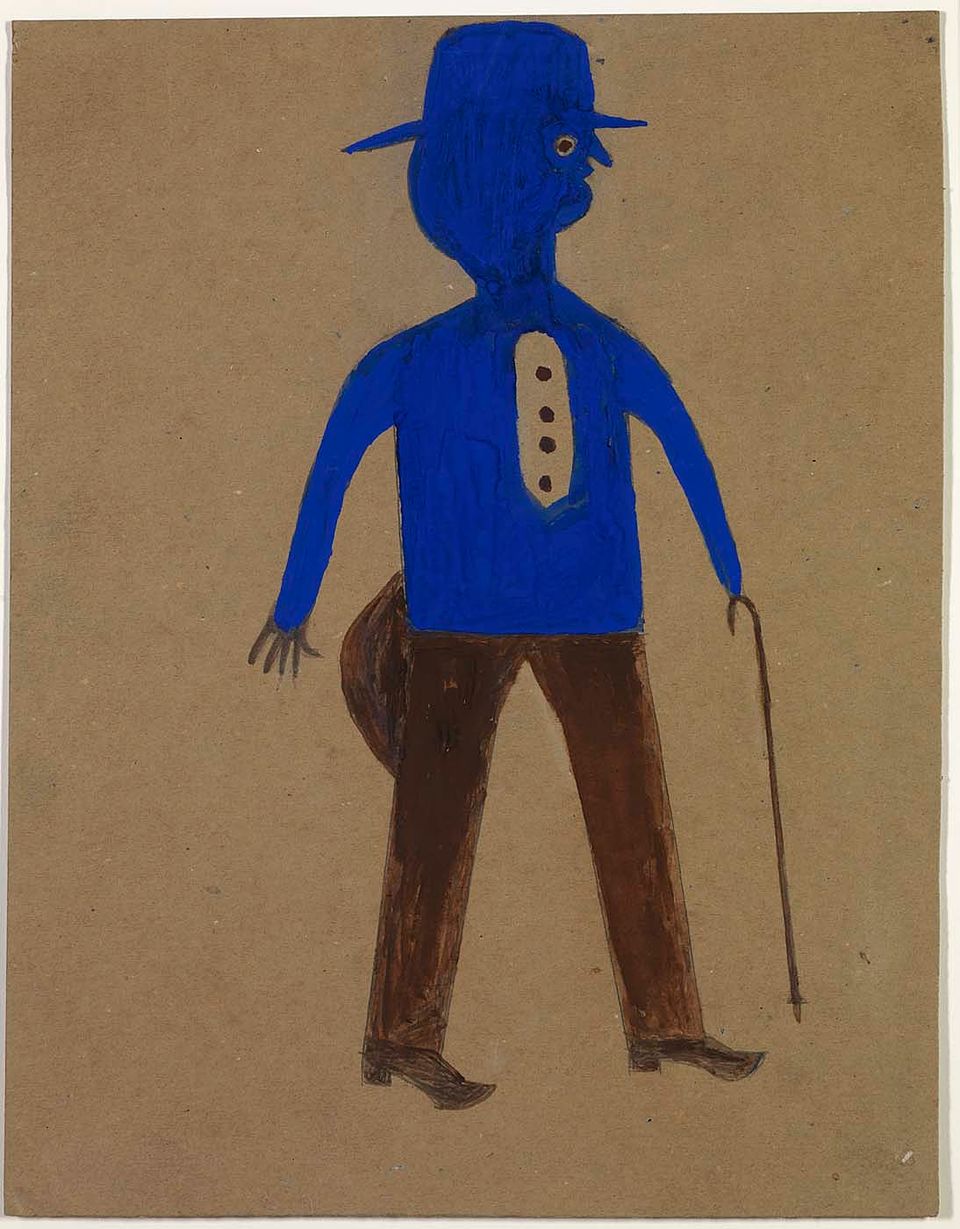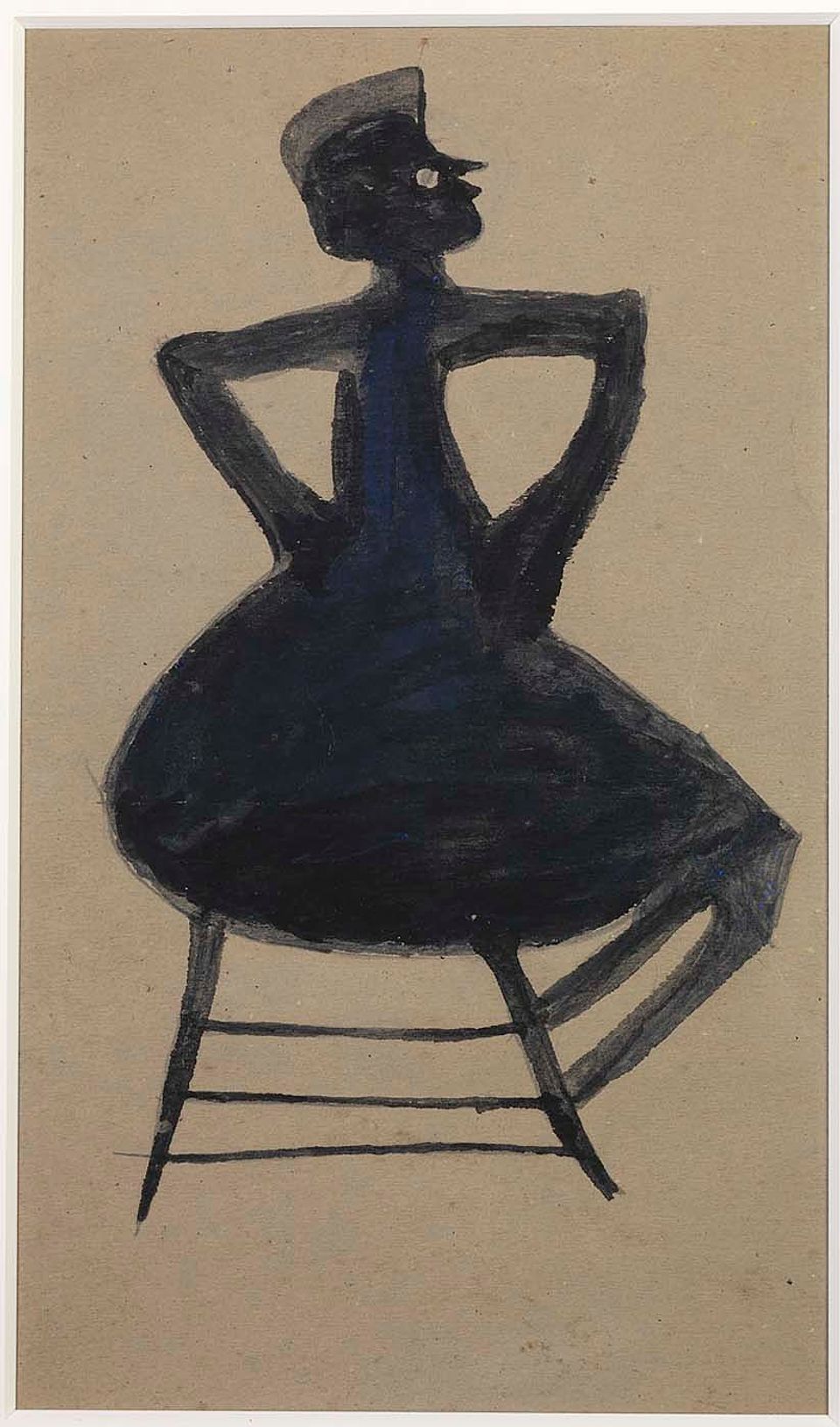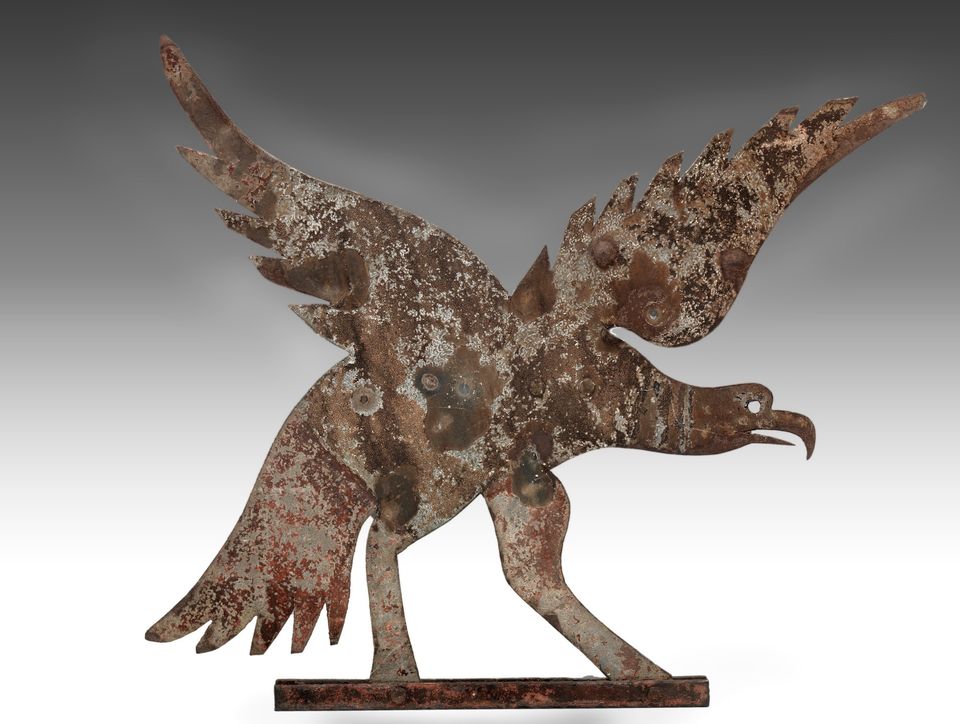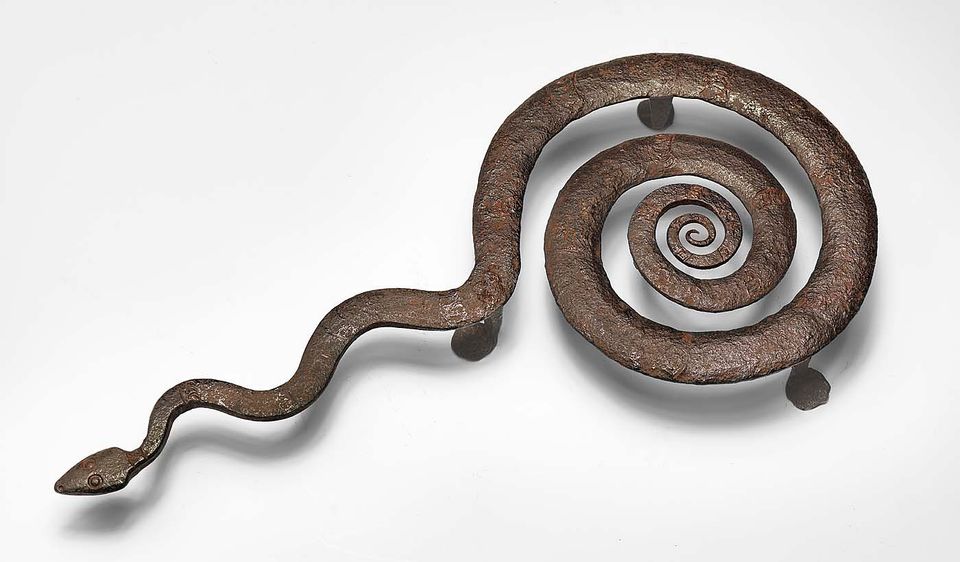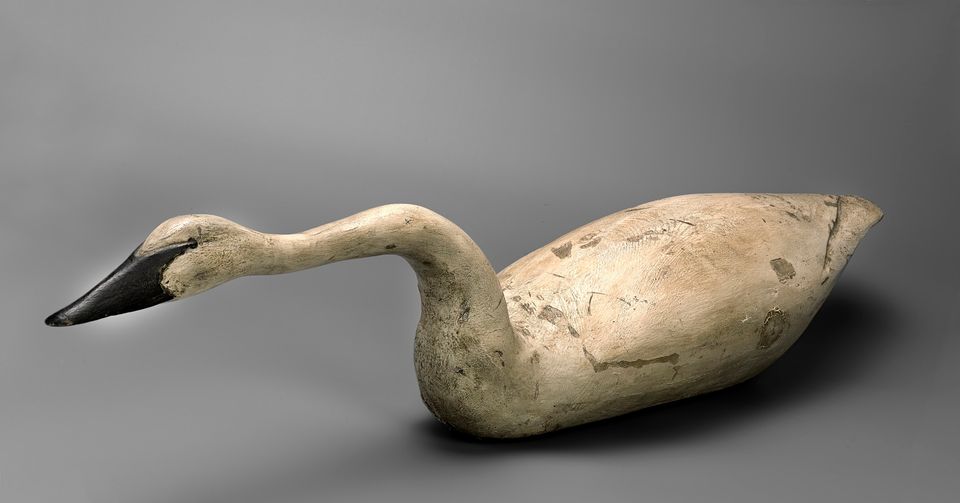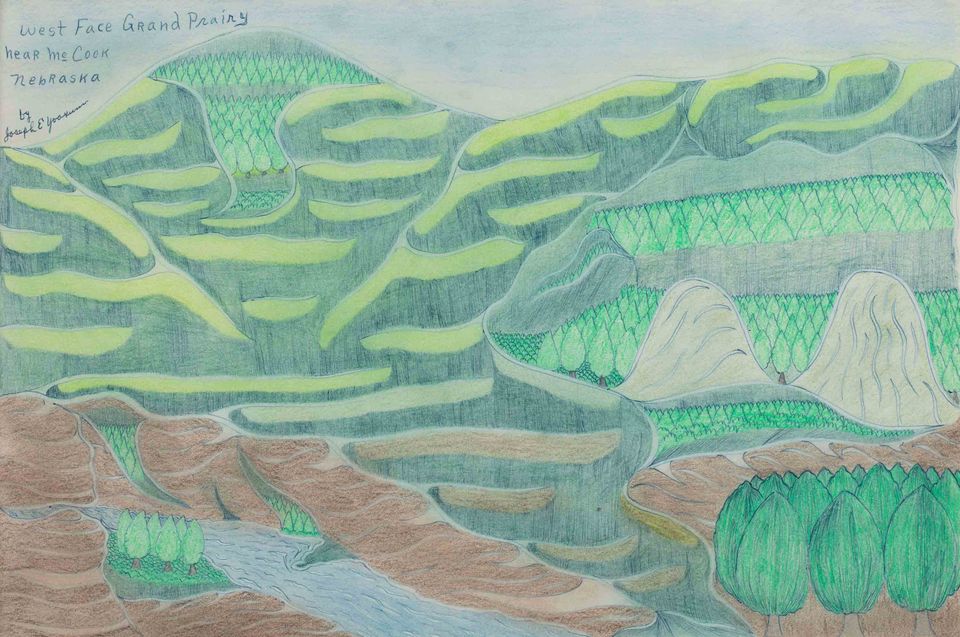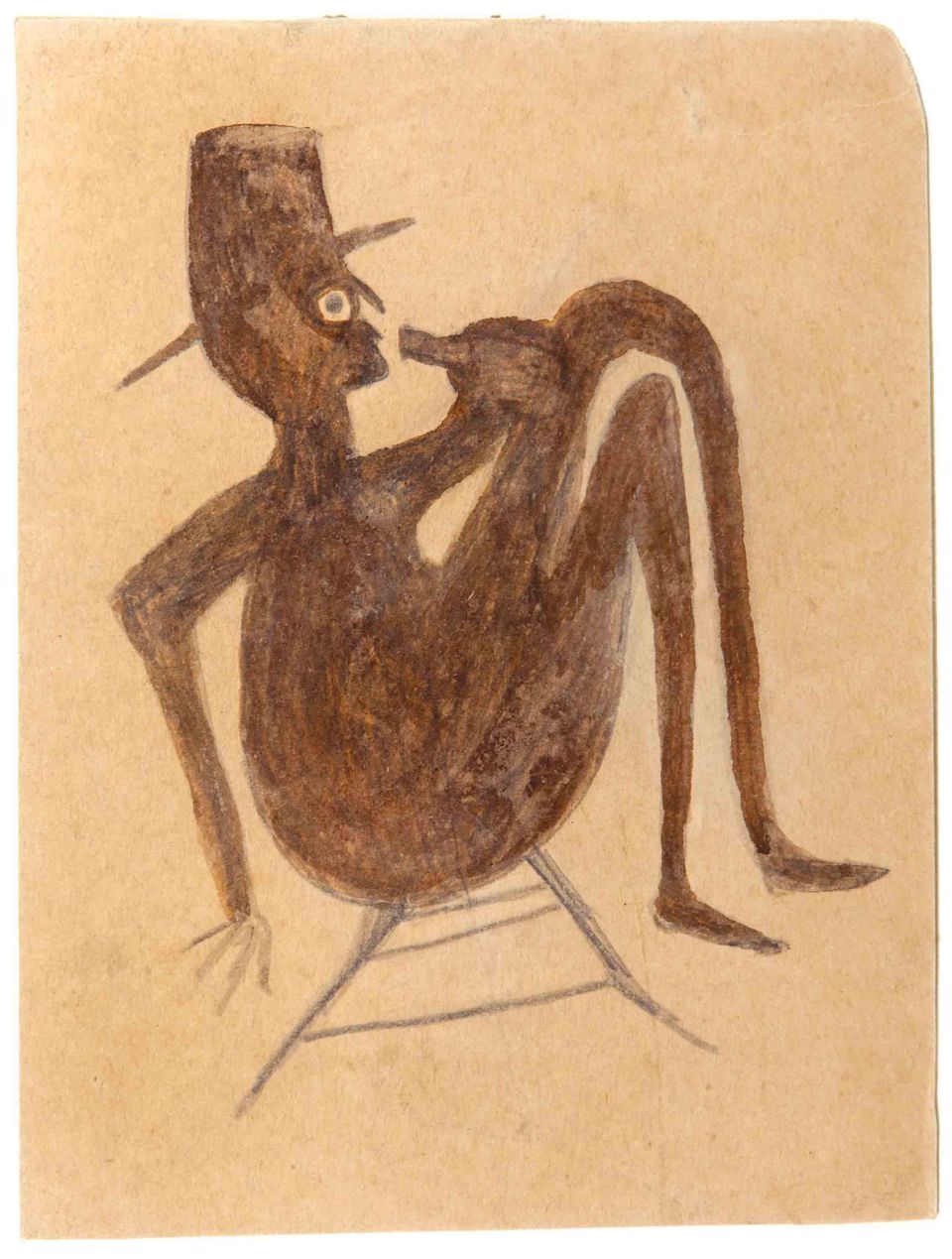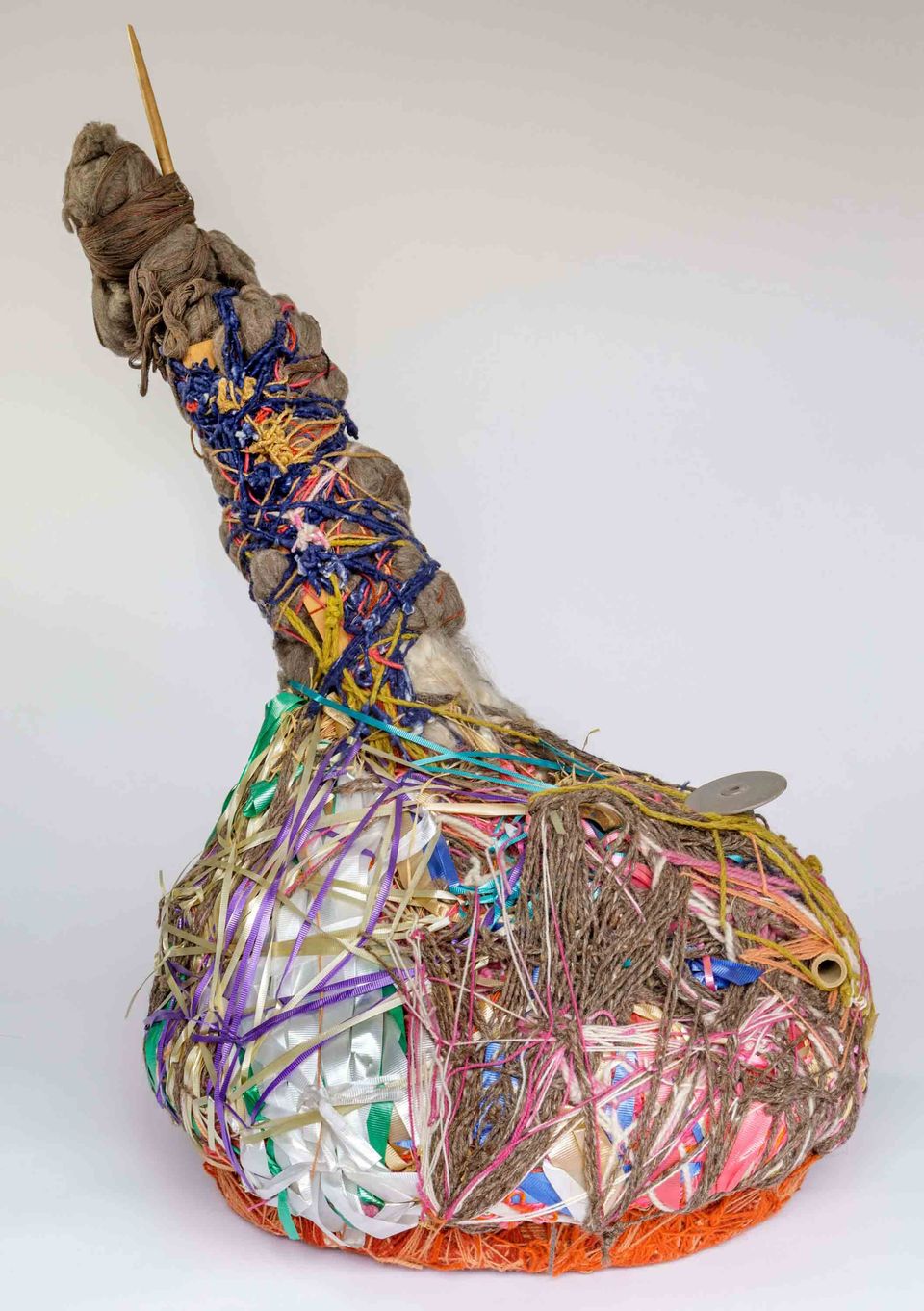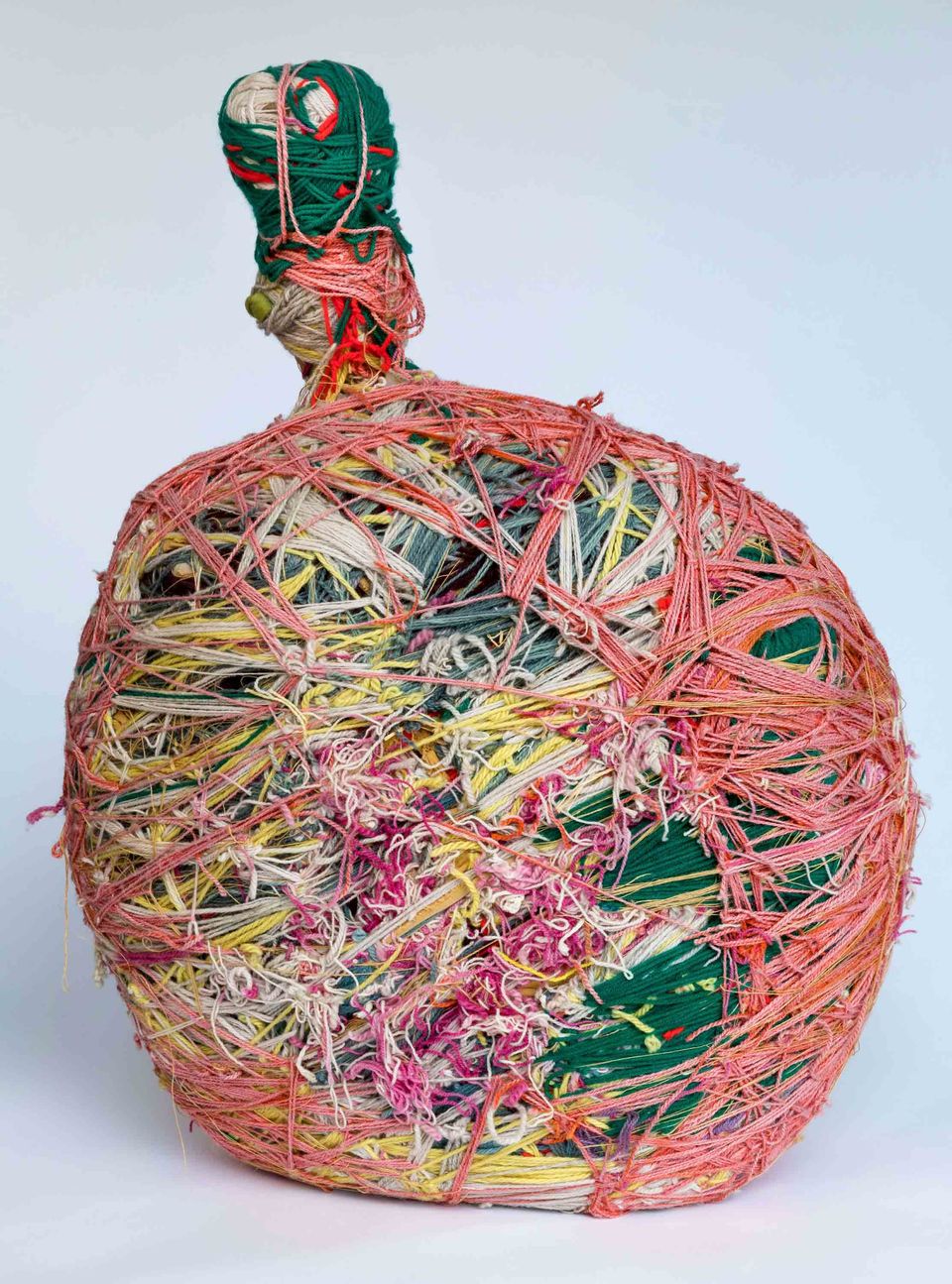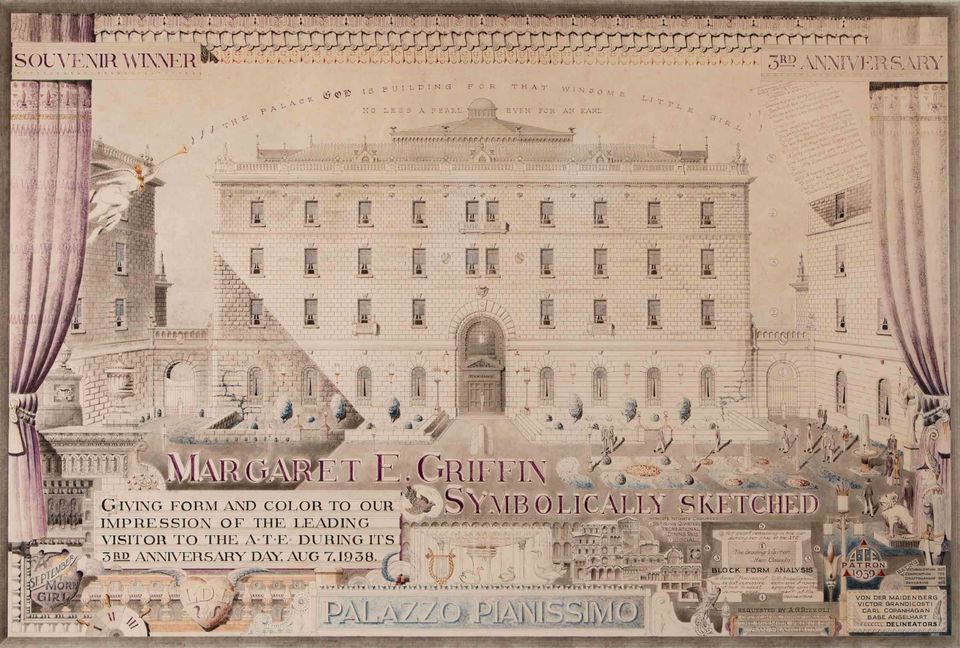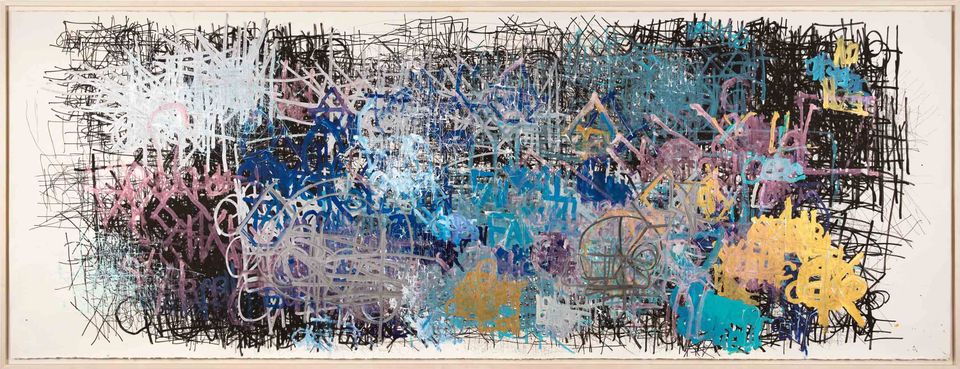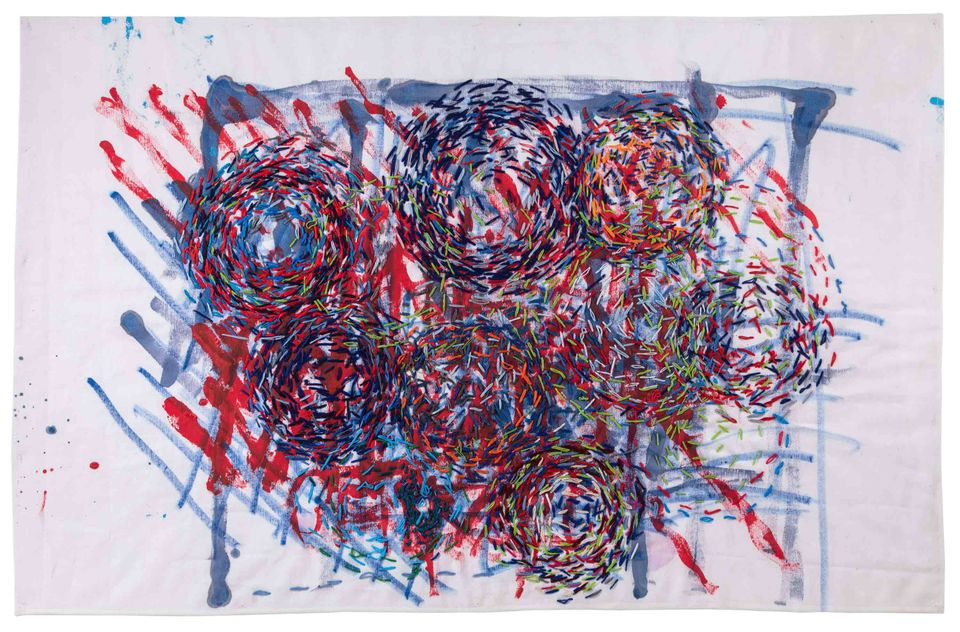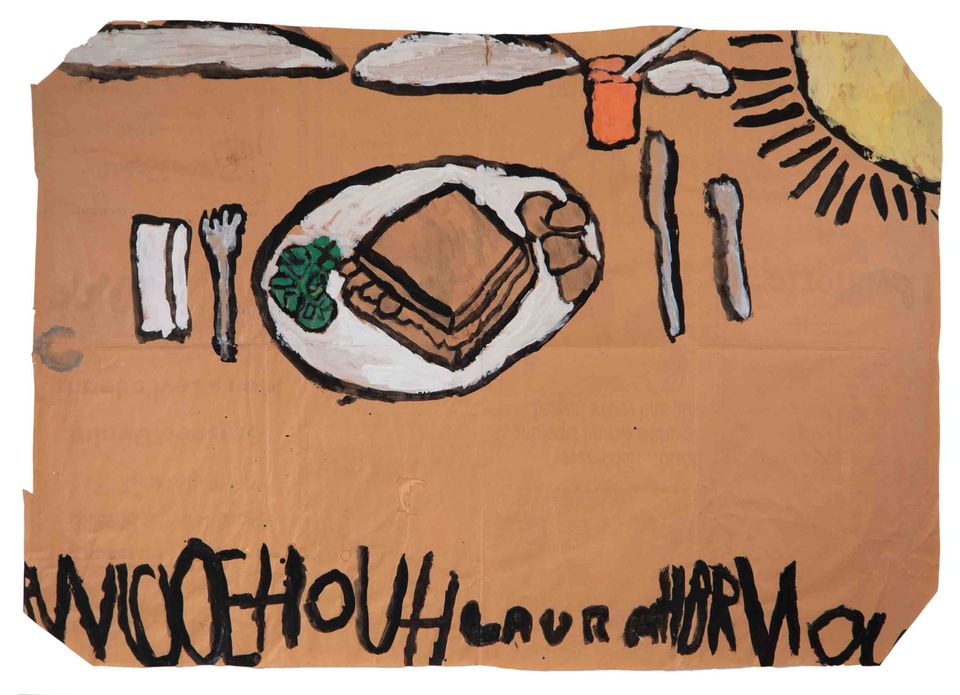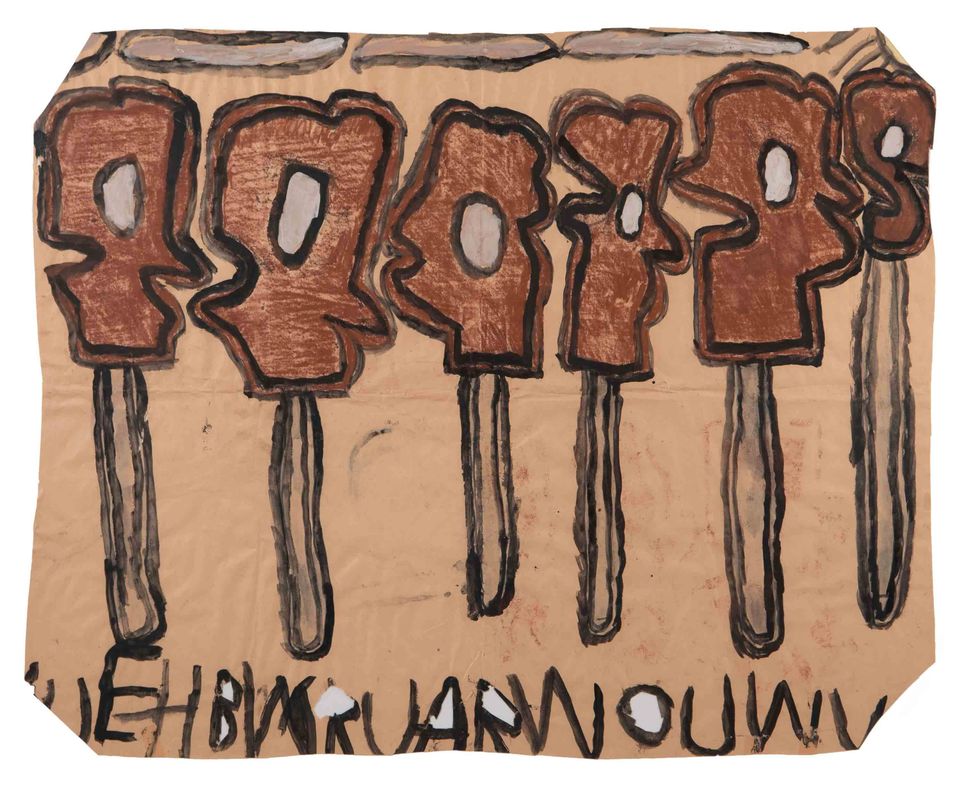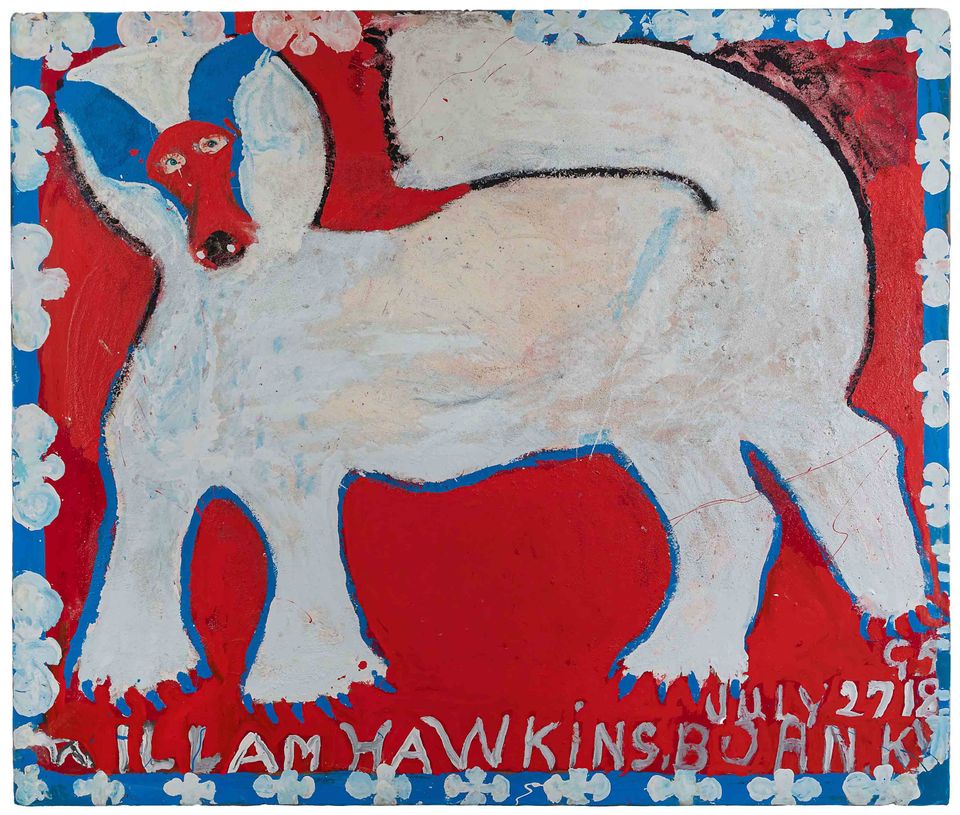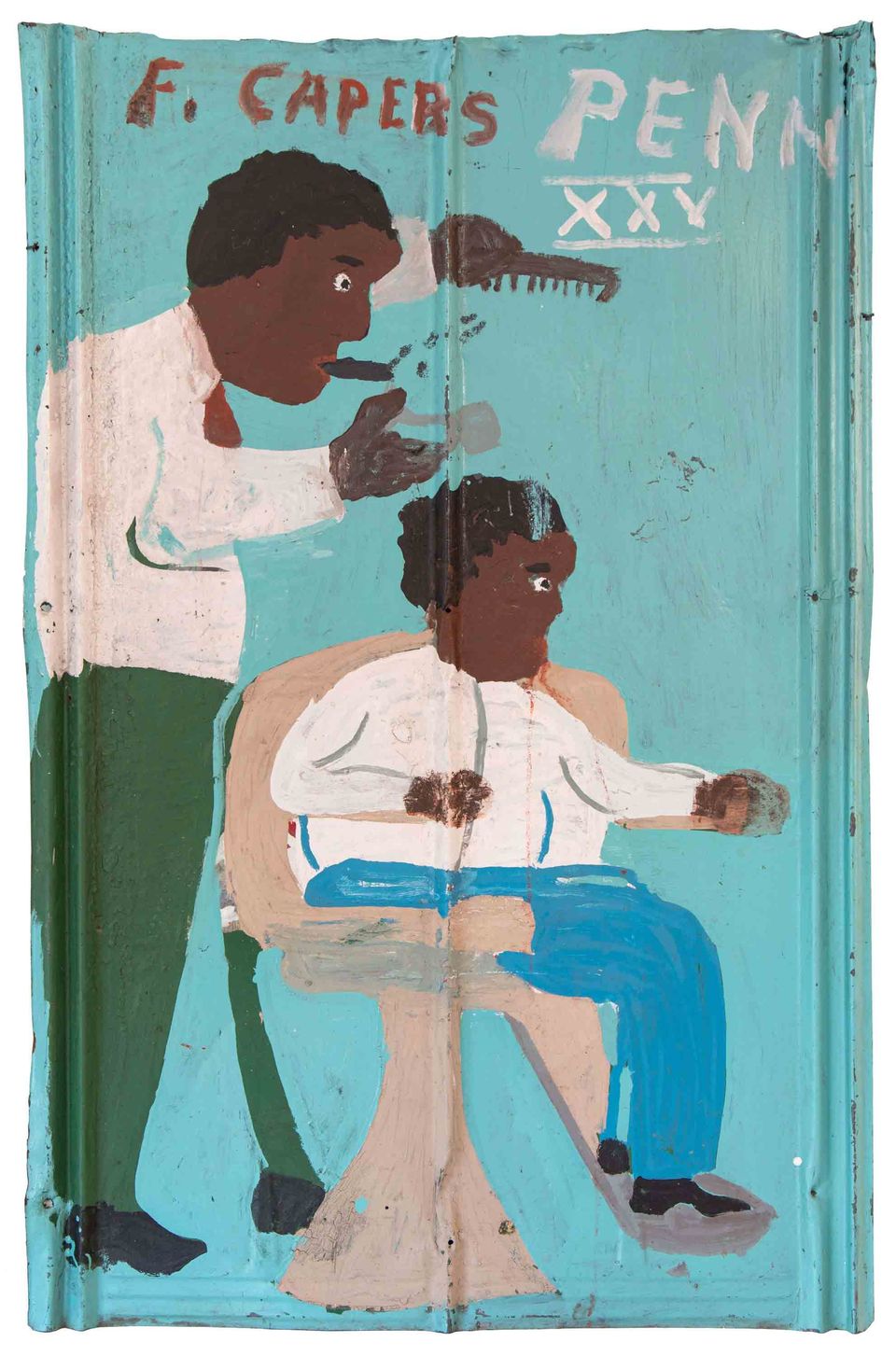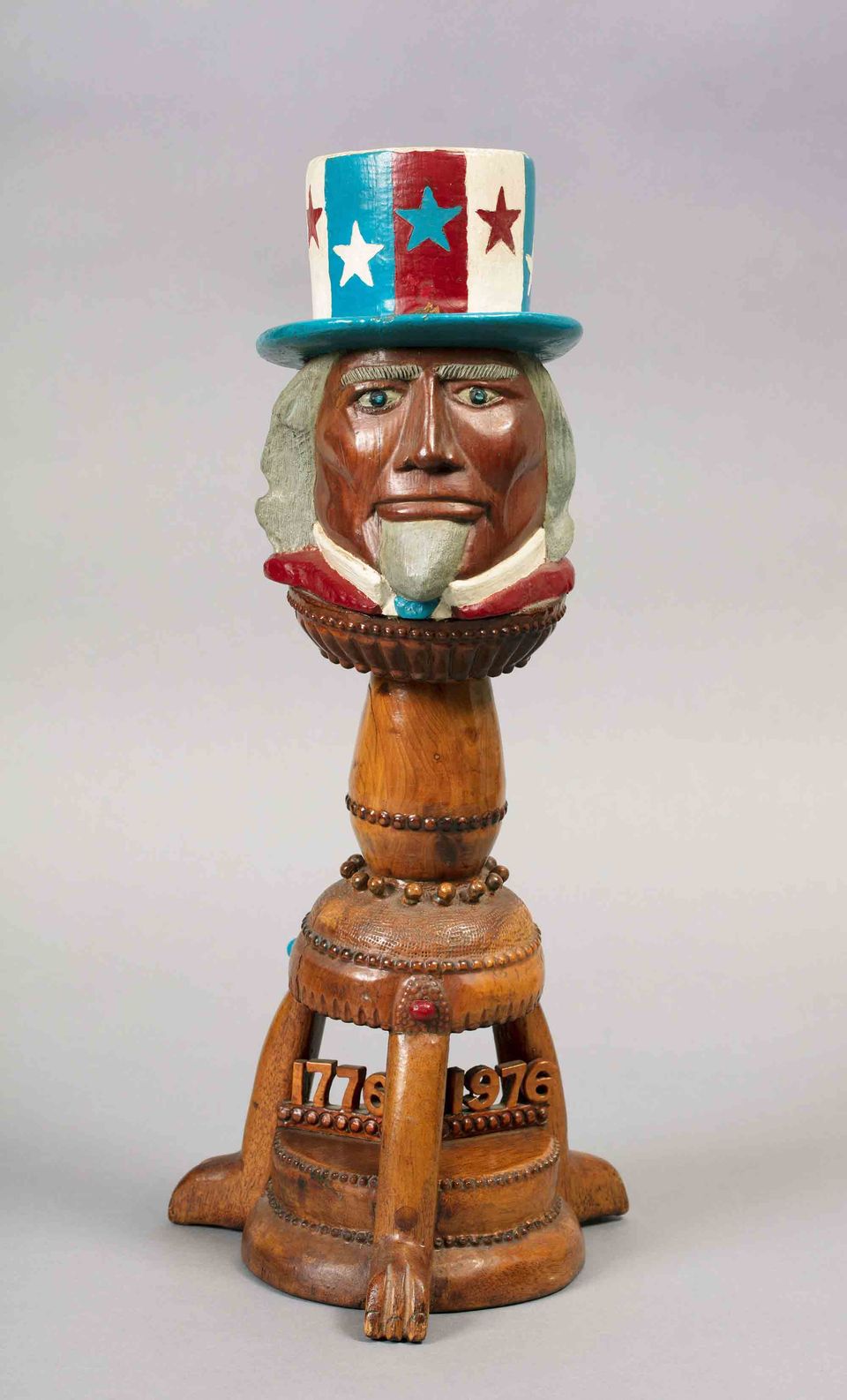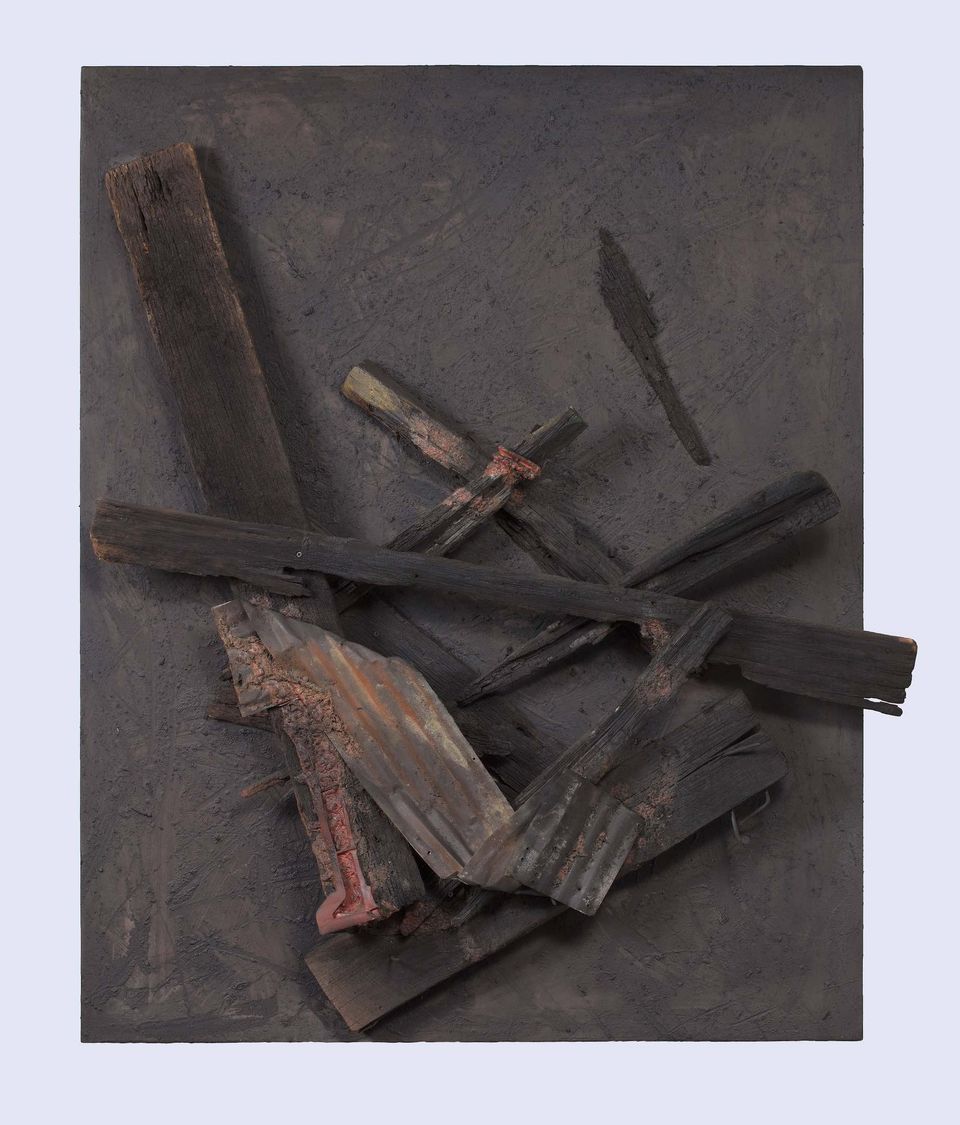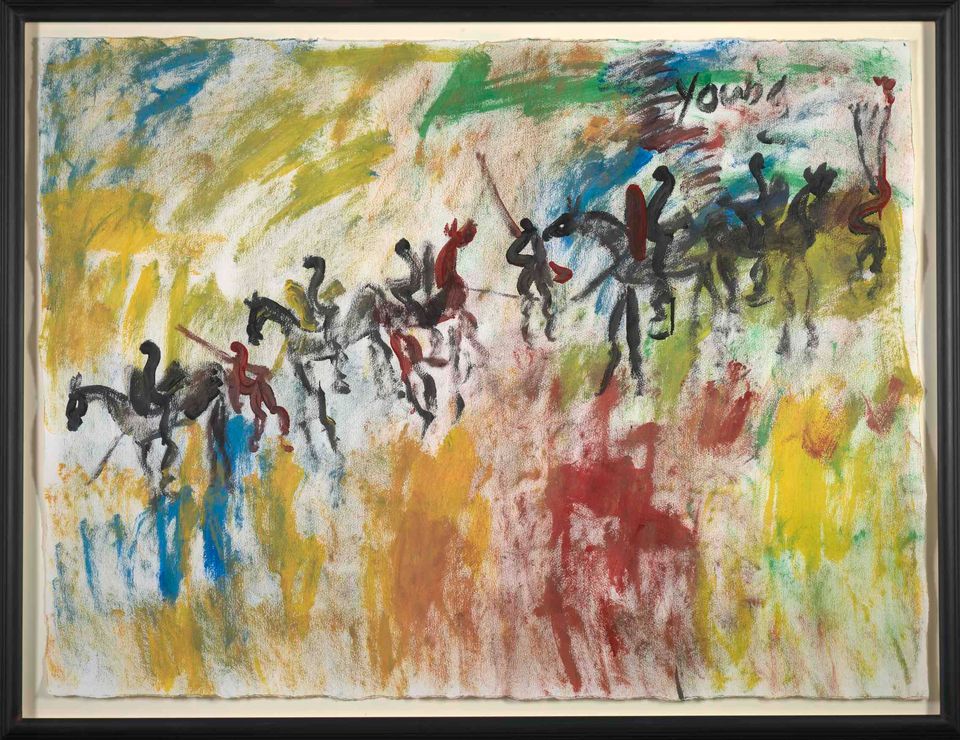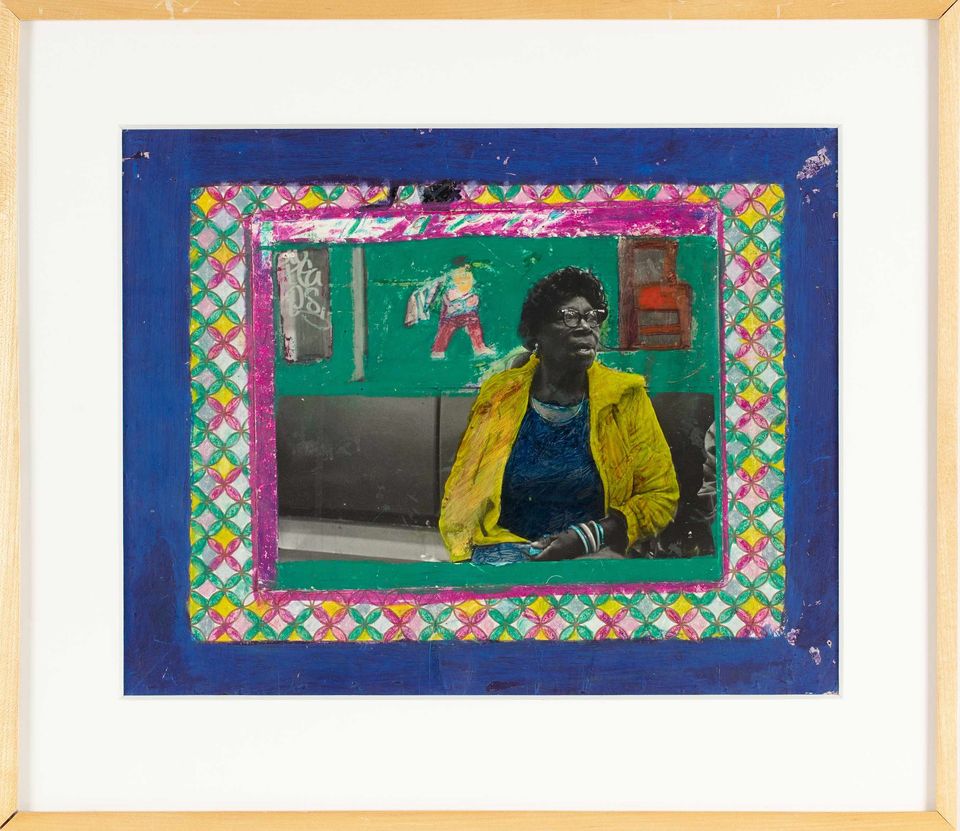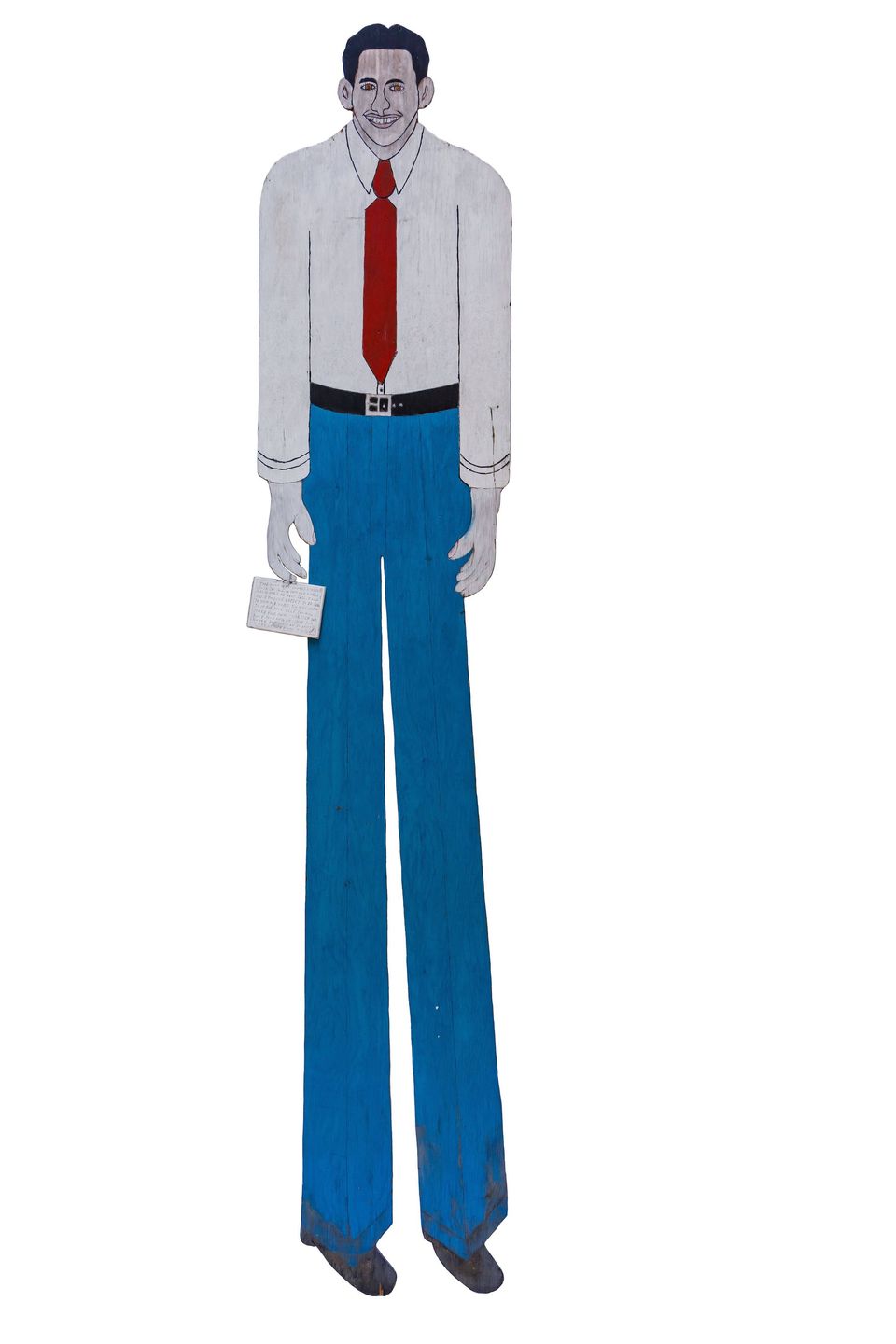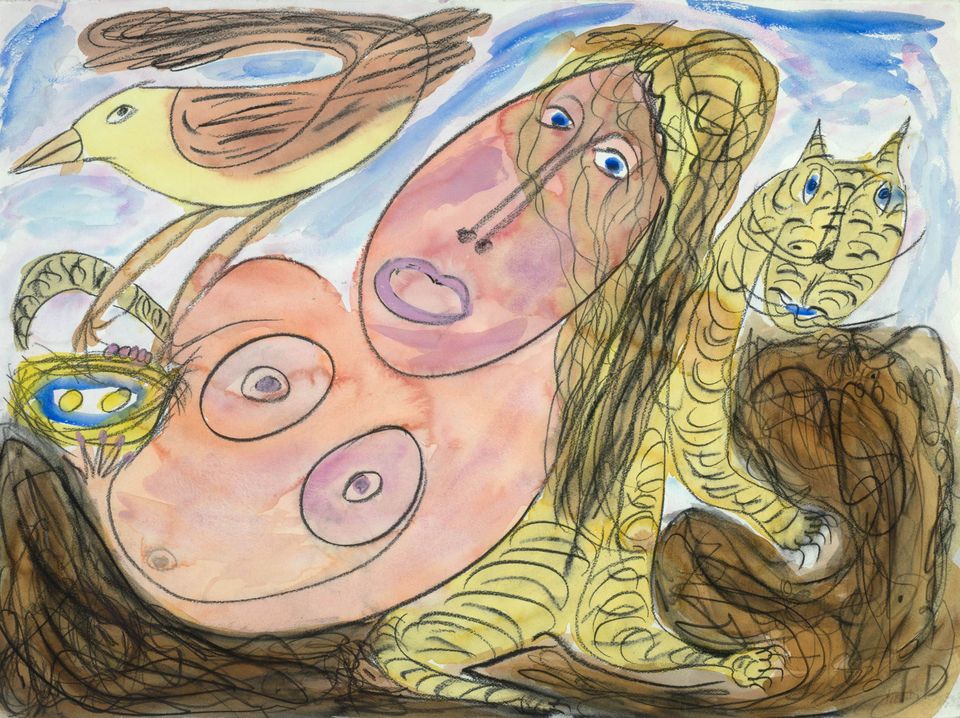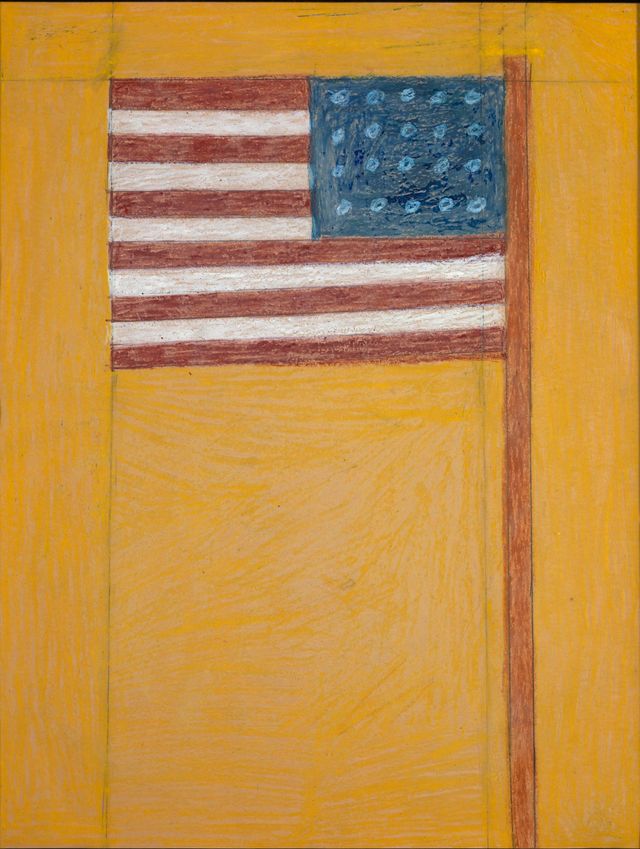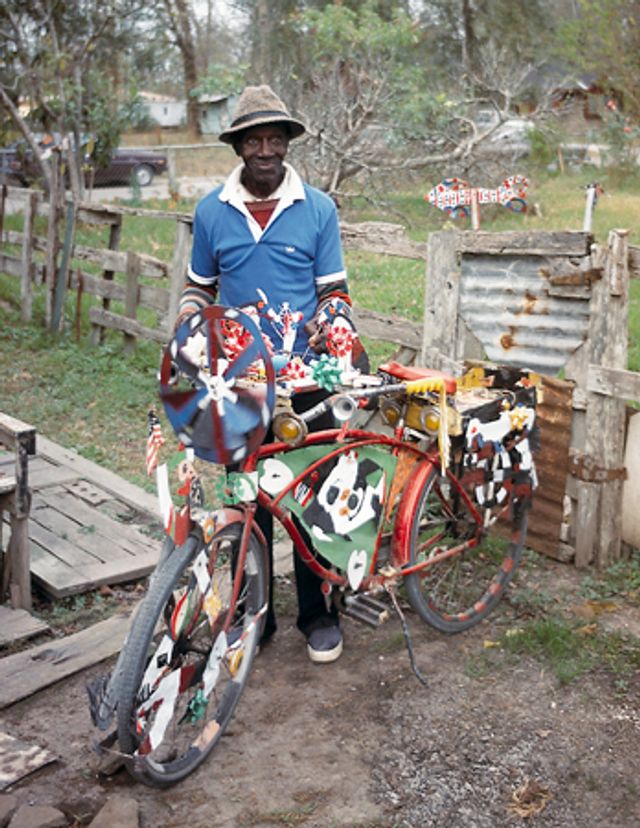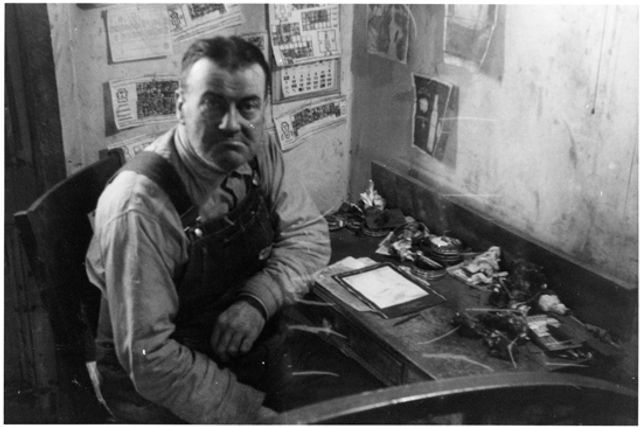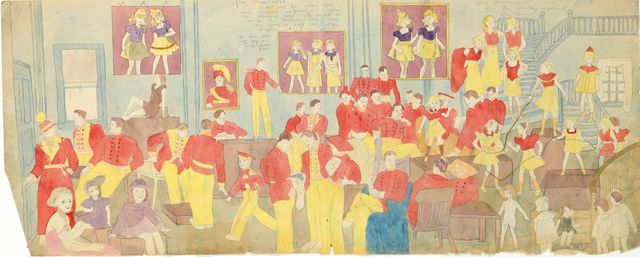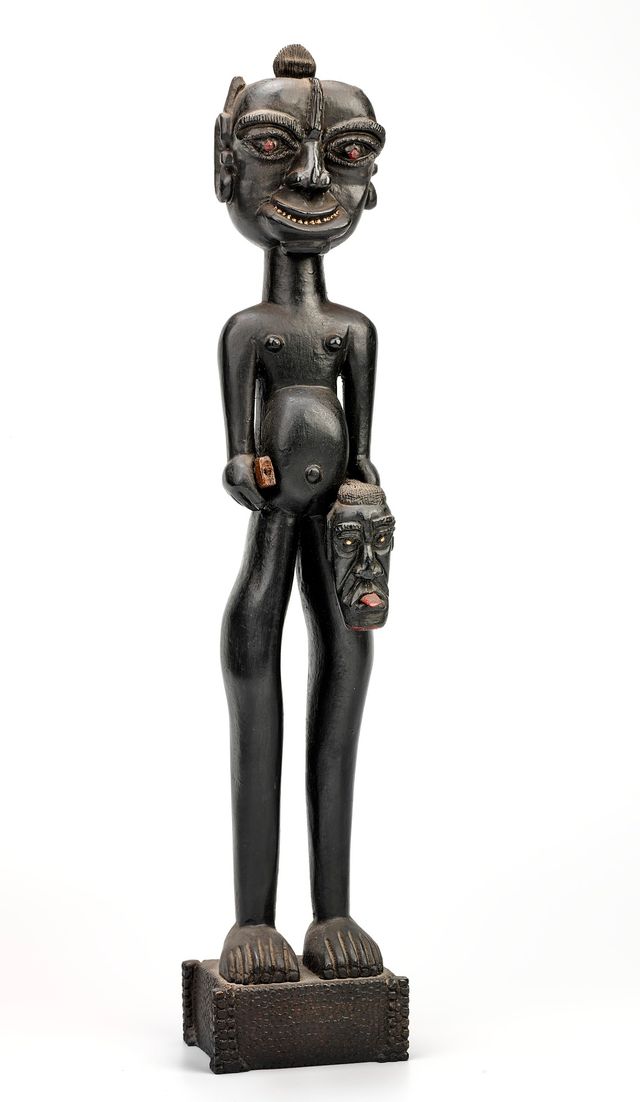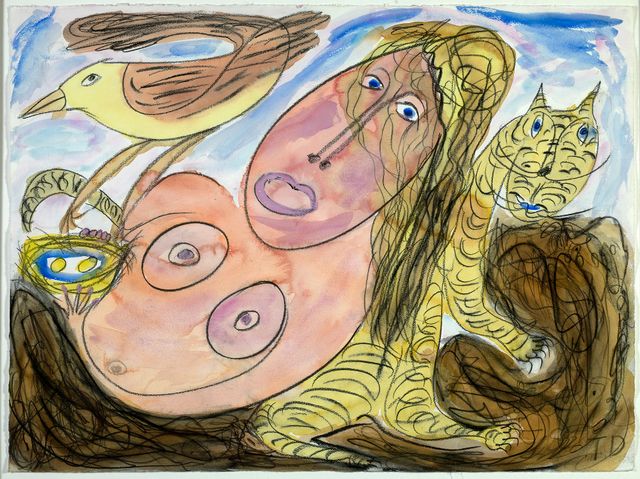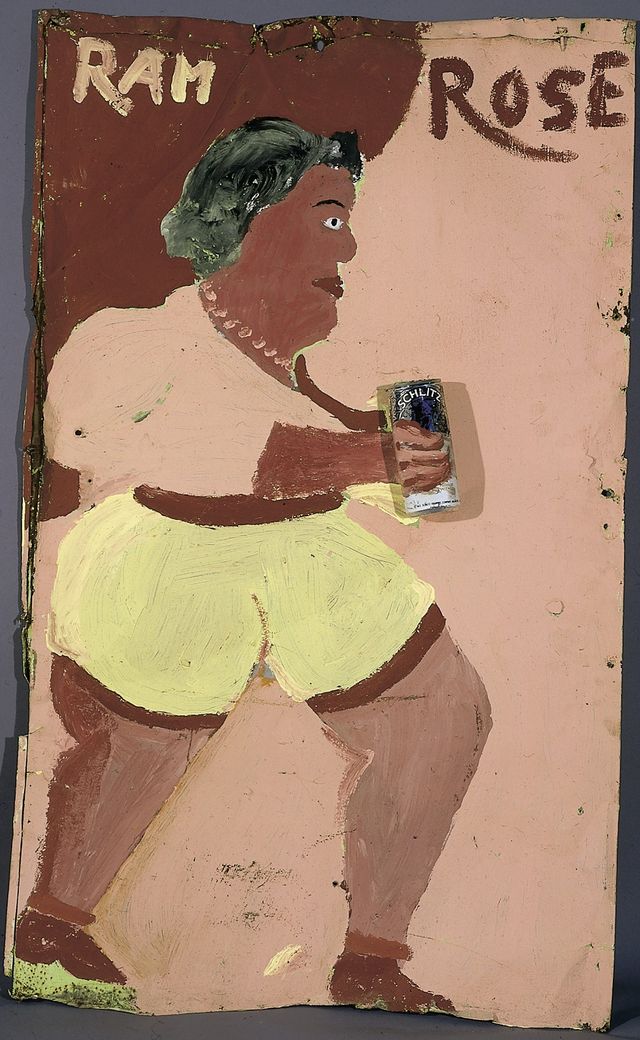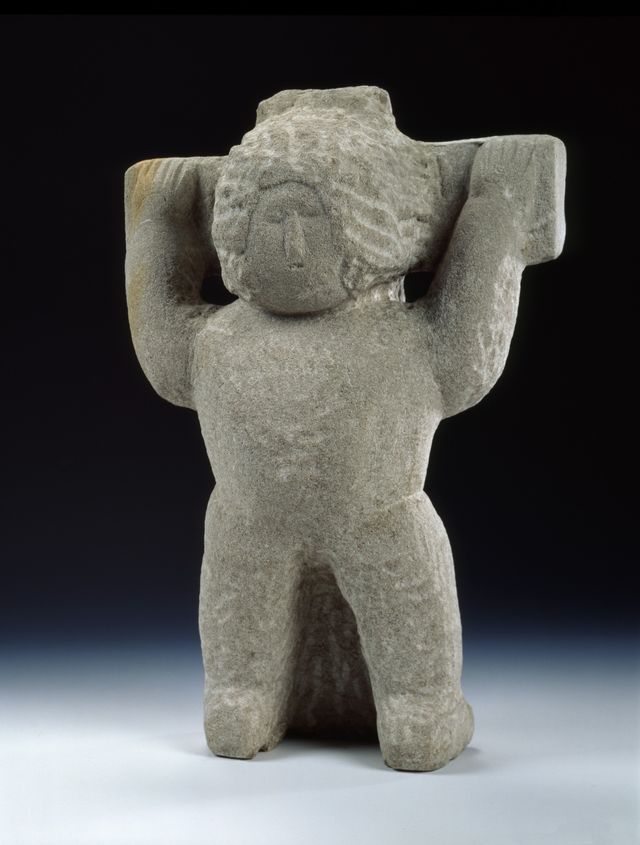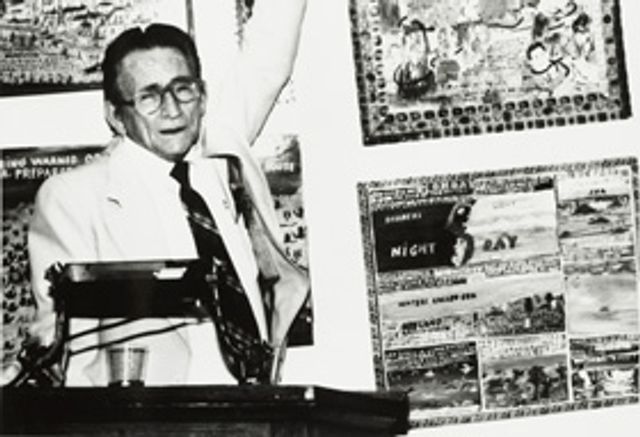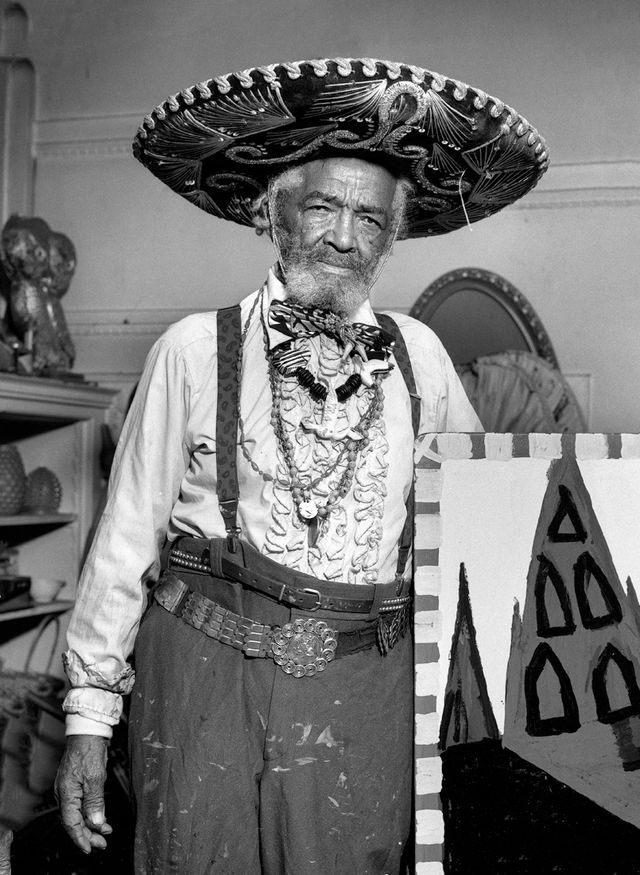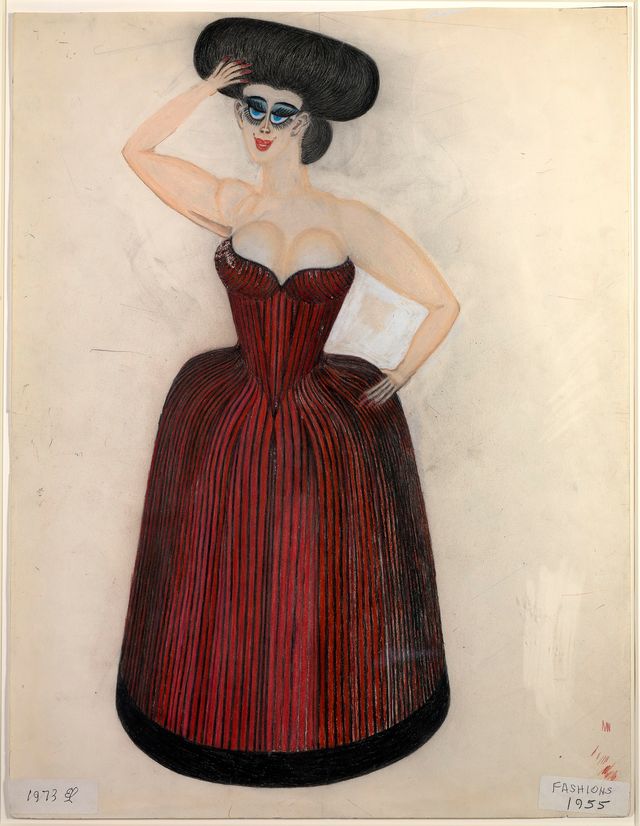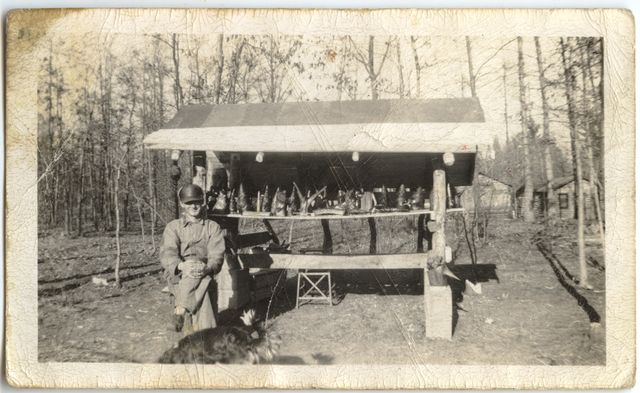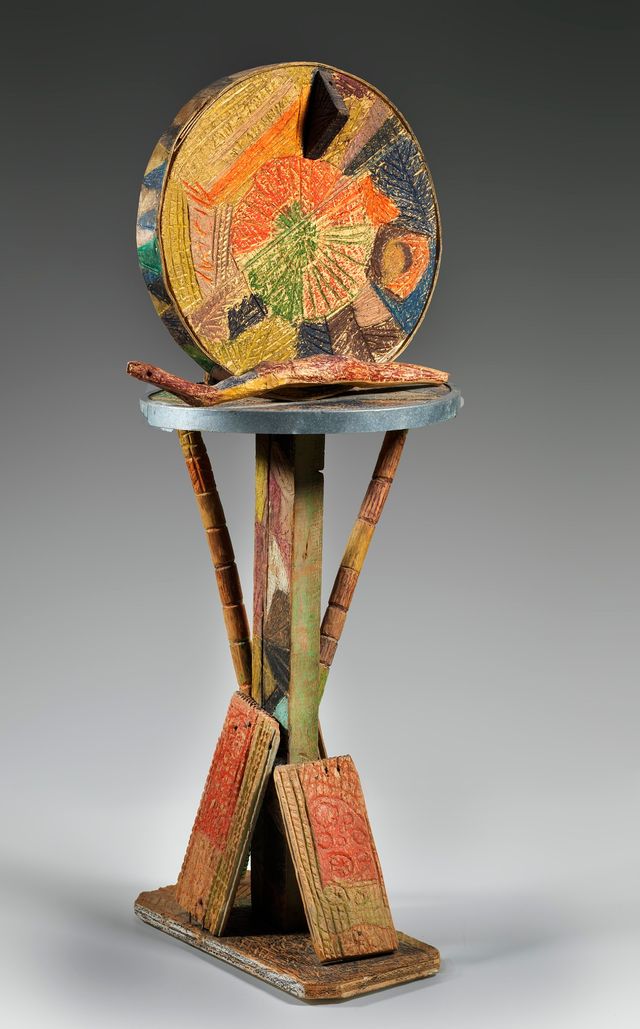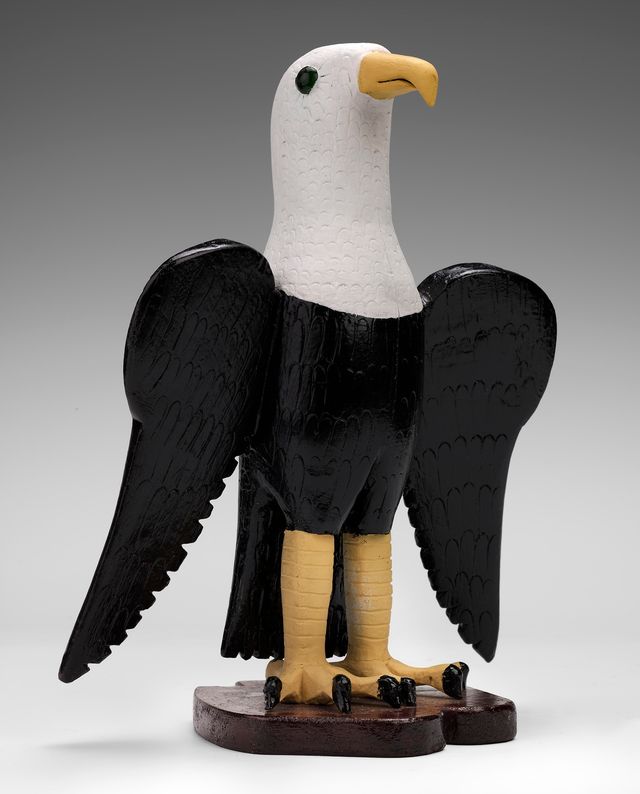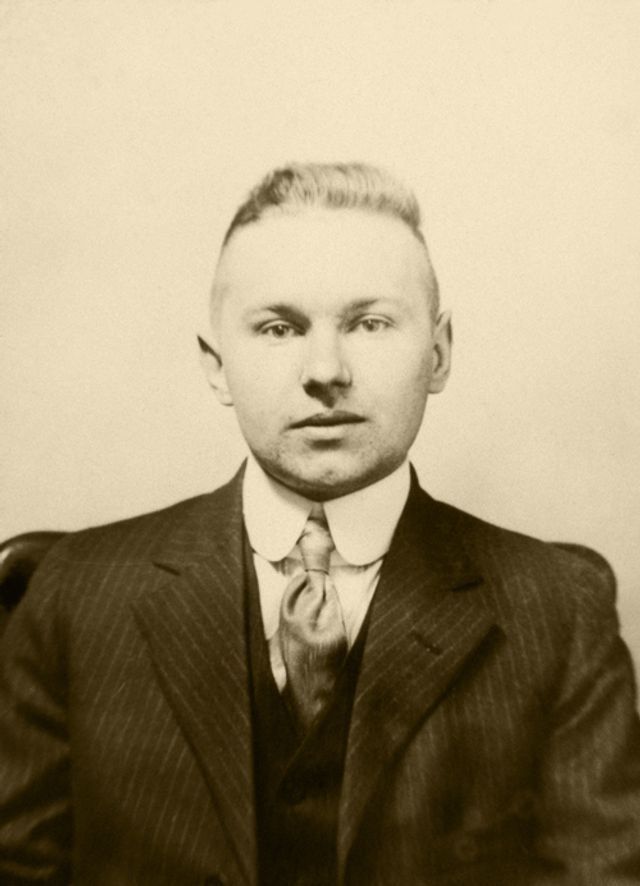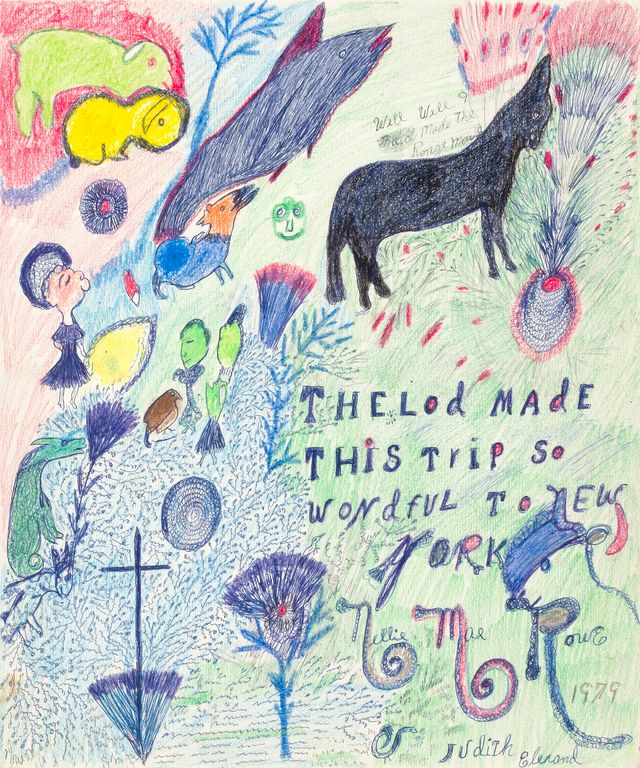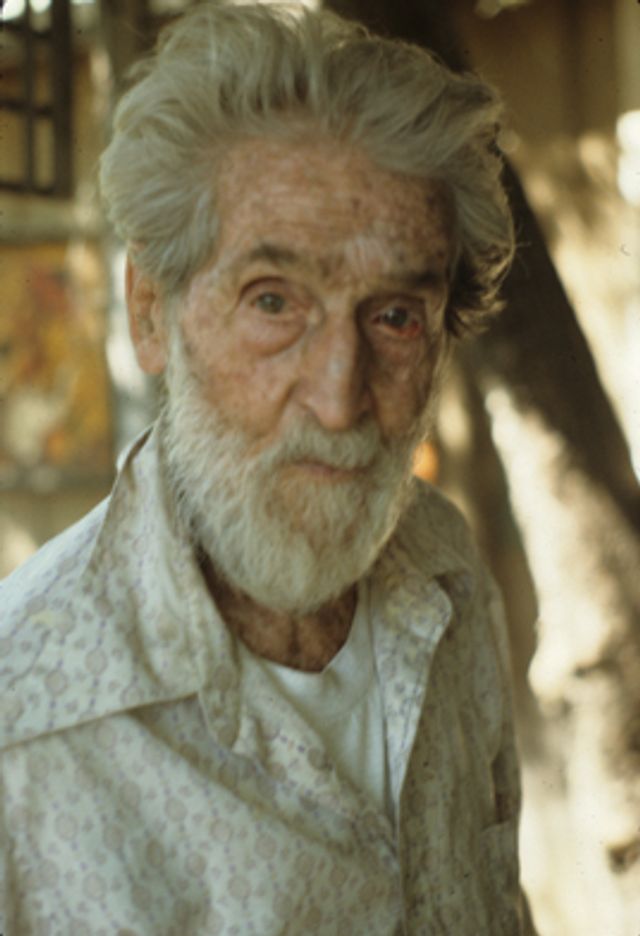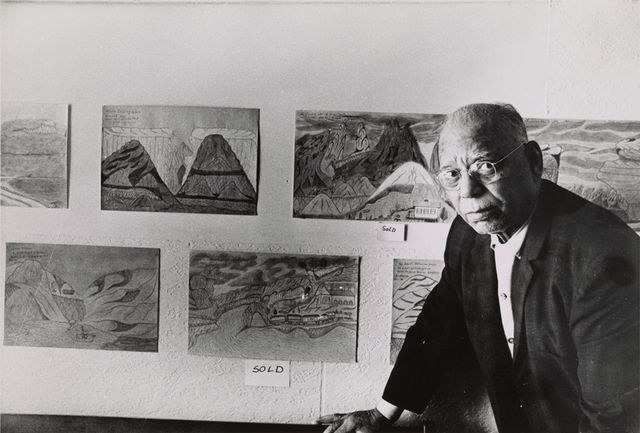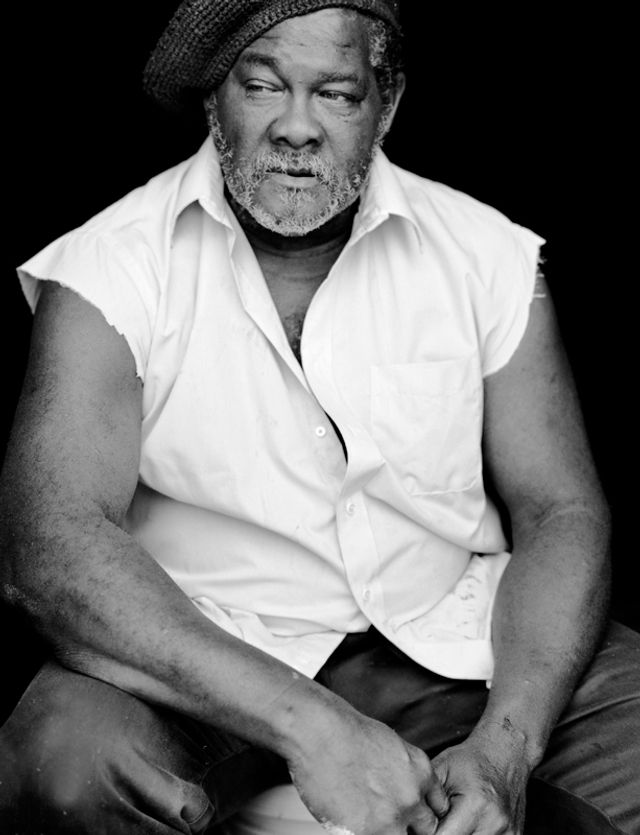We Are Made of Stories: Self-Taught Artists in the Robson Family Collection

Sister Gertrude Morgan, Fan, ca. 1970, paint and ink on card, 9 3⁄4 × 8 1⁄2 in.; irregular, double-sided, Smithsonian American Art Museum, The Margaret Z. Robson Collection, Gift of John E. and Douglas O. Robson, 2016.38.43r-v
Artists without formal training, who learned from family, community, and personal journeys, have long been a presence in American art. But it was not until the 1980s, with the help of trailblazing advocates, that the collective force of their creative vision and presence irrevocably turned the tide in the mainstream art world. Through drawings, paintings, and sculptures that span the narrative to the abstract, the artworks in We Are Made of Stories: Self-Taught Artists in the Robson Family Collection convey the humanistic power of art and allow us to see the world through the lens of another.
Description
We Are Made of Stories traces the rise of self-taught artists in the twentieth century and examines how, despite wide-ranging societal, racial, and gender-based obstacles, their creativity and bold self-definition became major forces in American art. The exhibition showcases forty-three artists, including James Castle, Thornton Dial Sr., William Edmondson, Howard Finster, Bessie Harvey, Sister Gertrude Morgan, the Philadelphia Wireman, Nellie Mae Rowe, Judith Scott, Bill Traylor, and others, whose work was admired and collected by Margaret Z. Robson (1932–2014). Margaret valued their artworks and personal stories, believing both offered a truer, more complete portrait of our nation's makers and redefined who could be an artist in America.
Following his mother’s lead, Douglas O. Robson continues to collect the work of self-taught artists and to support an inclusive vision of art: in 2016, he donated ninety-three works from the Margaret Z. Robson Collection to the Smithsonian American Art Museum. The exhibition features this original gift, along with thirty-two artworks he has promised to SAAM and a major painting by Dan Miller donated to the museum in 2022.
We Are Made of Stories continues SAAM’s decades long advocacy for a diverse populist and uniquely American voice within the context of what is traditionally considered great art. The exhibition is organized by Leslie Umberger, curator of folk and self-taught art at the Smithsonian American Art Museum.
Visiting Information
Publications
Installation Images
Videos
Credit
We Are Made of Stories: Self-Taught Artists in the Robson Family Collection is organized by the Smithsonian American Art Museum. Generous support has been provided by the Herbert Waide Hemphill Jr. American Folk Art Fund, Shaun and Andy Block, Steven Czekala, James and Catherine Denny, Sheila Duignan and Mike Wilkins, Travis Marquette and Sean Kosofsky, the Rumsfeld Family Fund, Jeff Rosensweig and Natalie Allen, and the Share Fund.
SAAM Stories
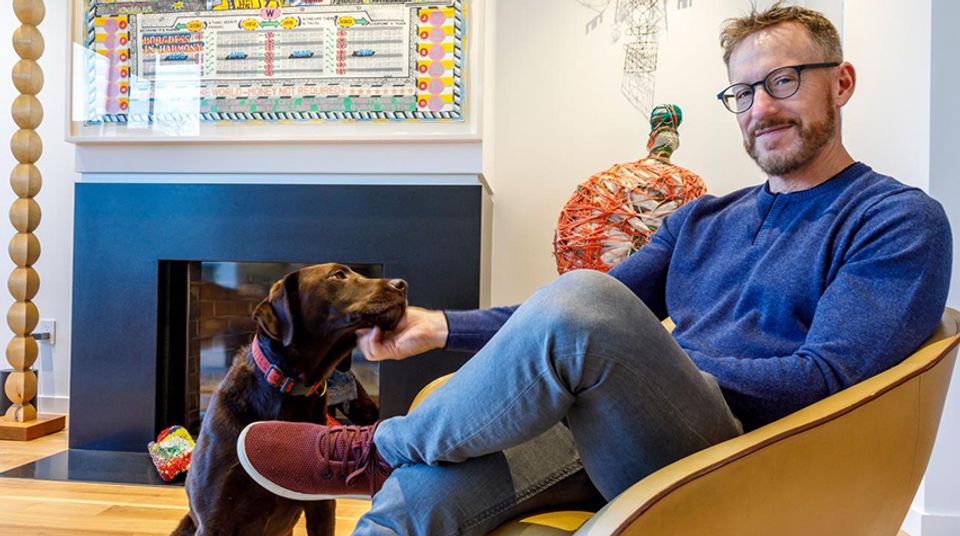
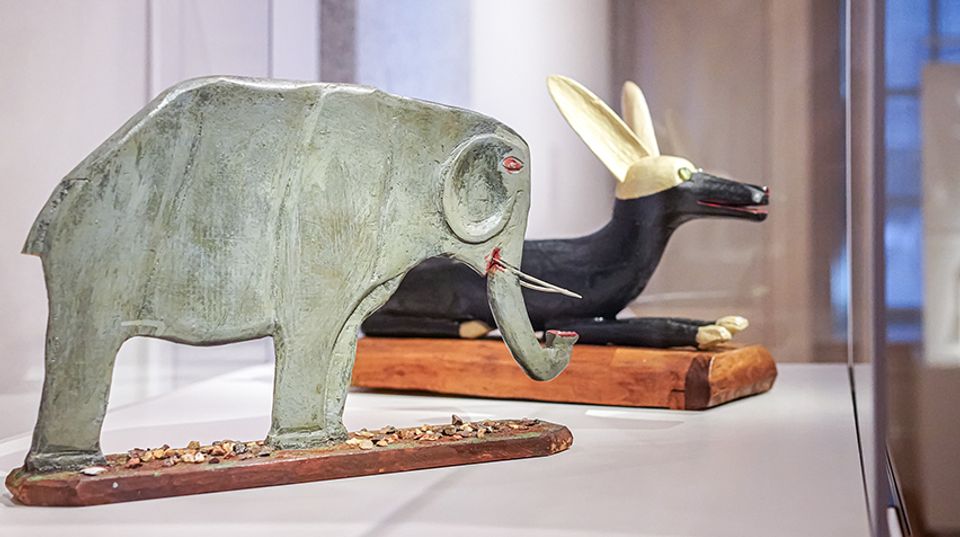
Online Gallery
Artists
Arning, like many self-taught artists, used magazine advertisements and illustrations as models or inspiration for his work. Nonetheless his work is highly individual; the link with the original source is often difficult to discern.
Often called just "Peter Charlie," Besharo was a handyman and house painter in Leechburg, Pennsylvania. He lived a solitary life, and his activities as an artist remained undiscovered until his death.
David Butler was born in Good Hope, Louisiana, not far from New Orleans. Raised to revere biblical scripture and spirituality, Butler’s worldview became a cultural fusion.
James Castle lived his whole life in the Boise Basin of Idaho. He was deaf from birth, and despite some schooling, never became fluent in alternative forms of communication such as lipreading, signing, reading, or writing.
Chicagoan Henry Darger gained posthumous acclaim as one of the city’s most recognized artists, but during his lifetime, he experienced tremendous hardship.
Davis developed his wood-carving skills on his own over a period of more than fifty years, beginning during his childhood in Fitzgerald, Georgia.
Thornton Dial was born into a sharecropping family in rural Alabama, on the eve of the Great Depression. He experienced the trauma and tumult of both Jim Crow segregation and the civil rights movement. Profoundly influenced by Dr.
William Edmondson, son of Tennessee slaves, did not consider himself an artist when he began carving around 1932, after retiring from his job as a laborer.
The Reverend Howard Finster is perhaps the most famous religious artist alive today.
Bessie Harvey used branches, roots, and found objects in sculptures that embody personal spirituality and speak about life’s challenges.
William Hawkins was raised on a farm in Kentucky and learned to draw by copying illustrations from horse-auction announcements and calendar pictures.
Miller was born in California’s Castro Valley in 1961 and joined Creative Growth, the same art studio where Judith Scott worked, in 1992. There he began making large, abstracted graphic works that function as communiqués in a self-shaped language.
Gertrude Morgan was raised as an active member of the Southern Baptist church. "My heavenly father called me in 1934 . . . . Go ye into yonder's world and sing with a loud voice you. . .
Elijah Pierce described himself as a "peculiar" child, because he did not want to work on his father's farm like his brothers.
Stephan W. Polaha was born in Cleveland, Ohio, and later moved to Pennsylvania. He eventually settled in Reading, where he worked various manual labor jobs and lived with his sister, Mary.
Nellie Mae Rowe was born in Georgia, in the last year of the nineteenth century—to a once-enslaved father and mother born the year of Emancipation.
Against the odds, Judith Scott became an artist of great renown, making fiber and mixed-media sculptures that encase forever-softened objects. Scott and her twin sister were born in Ohio.
According to Jon Serl, this painting began one afternoon with the drawing of a neighborhood boy who interrupted Serl's painting.
Simon Sparrow was born in West Africa to a Cherokee mother and an African father. He moved to North Carolina when he was two years old and lived on an Indian reservation.
Bill Traylor was born around April 1, 1853, on the Alabama plantation of John Getson Traylor in Dallas County, near the towns of Pleasant Hill and Benton. Traylor and his siblings were born enslaved, as their parents had been.
Yoakum began drawing in the early 1960s. Most of his work consists of radiantly colored landscapes with mountains, water, trees, and winding roads in abstract and complex configurations.
Purvis Young paints on scrap lumber and plywood that he scavenges from the streets and vacant lots of Overtown, the historically black neighborhood where he lives in Miami, Florida, and whose long deterioration he has witnessed.














